How to Hang Out with Your Homeschool Friends in a Socially Distanced World
Covid cases are spiking, and lots of secular homeschool families are still navigating social activities with extra caution. Having clear policies for homeschool co-ops and get-togethers can help all the folks in your community make the best choices for their families.
With Covid spiking and the usual back-to-school sniffles, this fall might start to feel like a tough season for homeschool get-togethers. If you want to keep your homeschool groups healthy, you don’t have to go no-contact, but you do have to be smart about how you socialize.
“In some ways, it’s harder for people to navigate socializing now than it was when the pandemic first started,” says Andrea Chronis-Tuscano, a clinical psychology professor at the University of Maryland who specializes in parenting and parent mental health. “The rules were clear.” But now that hanging out is back on the table, it’s hard to navigate: How can you stay safe? What does it mean to be a good host now? What does it mean to be a good guest? How do you say no when you’re uncomfortable with the way a social situation is going?
The good news is that we’re all figuring this out together, says Chronis-Tuscano. “No one has a rule book with all the answers, and everybody’s answers look a little different.”
We all know the basic rules: Wear masks, maintain six feet of distance, don’t share food and drinks, stick to small groups, stay outside, and wash your hands frequently. But how does that play out on a homeschool play date or at an in-person co-op class? Here are some things to keep in mind.
Respect the strictest rules.
People may not always want to disclose why they’re being extra-cautious, but the why doesn’t really matter — if you’re hanging out with friends, you want your friends to be comfortable. This is why it’s important to spell out the safety guidelines you have in mind for a get-together when you’re issuing invites. You don’t have to change your plans to accommodate someone else (you’d love to hang outside, but your allergies are killing you this fall), but you may find that there’s an easy fix (sure, you can bring your own food instead of ordering something with the rest of us).
Follow your own rules.
If you issue an invitation for an outdoor gathering, resist the urge to move the action inside. If you’ve promised social distancing, don’t send the kids on the trampoline together. No one wants to be the killjoy who has to keep reminding everyone else to follow the rules, so don’t put your guests in that unpleasant position. If you’re the unfortunate person in the killjoy position, you may find it easier to make an excuse and leave than to try to persuade people to follow the rules. (Even though they made them. And you’re not being a killjoy!)
Set up in advance.
Make your hangout area social distance friendly by setting chairs six feet apart and removing extra seating. If you’re a throwing an art party, have everyone’s station set up before they arrive — if you’re having a snack together, set up the tables and chairs in advance with space between them.
Stick with your comfort zone.
It’s fine if you’re more relaxed than your pals, or if you’re sticking to a stricter quarantine plan than they are. Everybody has to make these decisions for her family individually. It’s OK to say no to get-togethers that make you uncomfortable. We’re all looking forward to the day when we can hug our friends and share a bag of pretzels at the park, but until that day comes, we’re all doing the best we can.
What’s the best way to organize your homeschool library?
The key to useful and accessible homeschool library: Good organization. If you want to wrangle your book collection into a well-organized library, you’re going to have to get hands-on. Here’s how.
I have a problem: Our library is out of control. I don’t mind the bookcases taking over our house, but I hate when I discover a book that I bought for a particular subject but forgot about until months after we wrapped up studying that subject—or worse, when I buy a book only to find that I already own a copy of it. Is there any way to organize our homeschool library so that it’s a resource and not a headache?
The key to useful and accessible homeschool library: Good organization. If you want to wrangle your book collection into a well-organized library, you’re going to have to get hands-on. Here’s how:
Start by making an inventory.
I know! It’s a huge project. It’s dusty and messy — and it’s probably not something you can accomplish in a single afternoon. But it is the only place to start if you really want to organize your library. Start a list of all the books in your collection — I use index cards, but you could set up an Excel spreadsheet or use a tool like LibraryThing instead. (If you have a lot of newer books, LibraryThing has an app that scans book barcodes to instantly upload their information, which is pretty convenient.)
As you sort, you may find books that you can discard or give away — I hear this happens sometimes, though I’ve not personally experienced it. If you uncover books you can part with, trade them in a used bookstore for more books, drop them off at your homeschool group’s free pile, or donate them to your favorite thrift shop. (You can try to sell high-quality or expensive books you’re ready to let go of.)
Catalog your books.
A list of books is great, but you really want to make it easy to find books about, say, Egyptian history and mythology or the California gold rush when you want them, right? Tag your books with labels to help you sort them.
With my index cards, I create subject cards where I list books I own in a particular subject — medieval history, coming-of-age novels, dinosaurs, etc. (Some subjects require more than one card, some books go onto multiple cards, and I jot new titles as we acquire them.) In Excel, designate a field for tags. The idea is to create a simple system that will remind you what books you have on any subject when you want to find them, so it’s better to err on the side of extra tags — that way, when you hit search, you’re more likely to actually find what you are looking for.
Shelve your books.
Lots of homeschoolers have more books than shelf space. To deal, “shelve” subject-specific groups of books in plastic bins, and label your bin with the subject (Japan, biology, astronomy, etc.) and a list of the books inside. (I think this is easiest with a bin per subject, but of course you can lump subjects together if you prefer.) Then note which books are binned — I fold a sticky flag over the right corner of my index cards, or you can change the color of binned books in your spreadsheet or just leave yourself a note.) Then, when you’re ready to tackle a particular subject, all your books are ready in one place.
For the books that go on your shelves, sort them by author, subject, or size, and note where to find them. (My daughter’s Warrior Cat books are shelved as O-1, cluing me in that they’re on the first bookshelf in her room, while our Story of the World collection is in the foyer bookcase: F.)
Keep it organized.
For this system to work long-term, you have to be vigilant about updating it every time you add a new book to your collection. At our house, new books go into a holding box, and they’re considered unavailable until they’ve been cataloged and shelved — otherwise, they’d drift off with a happy reader and vanish from our records. I don’t love having to move things around in the garage to add a single volume to our U.S. History bin, but I do love the fact that when we need our U.S. History collection, it’s easy to find and enjoy.
Working Full-Time and Homeschooling: How I Do It
I’m totally lucky to get to balance a job I love with hands-on homeschooling, which I also love, but hitting that balance isn’t always easy, and I’m learning to be okay with that.
I’m totally lucky to get to balance a job I love with hands-on homeschooling, which I also love, but hitting that balance isn’t always easy, and I’m learning to be okay with that.
I work full-time. (And then some.) I also homeschool my kids in a pretty hands-on way. And you might think that this all gets easier as kids get older and more independent, but I’ve found the opposite to be true. High school homeschooling, when you’re doing most of it in the homeschooling-at-home kind of way, takes a lot of time and energy. People are often interested in how I balance these two big jobs, so I thought I’d write a post about my work/homeschool balancing act.
First off, I’m pretty sure a lot of the time that I do it pretty badly. It’s not easy. Things slip through the cracks. I have a vague, nagging sense of guilt all the time, like whatever I’m doing at any given time, I should be doing something else. (I’m not saying this to complain — I know I’m lucky to get to do things this way. But I think it would be totally fake to pretend that working full time and homeschooling is easy or that I do it well all the time!)
And second, I love what I do. I think I have the best job in the entire world, and I find homeschooling really fun and satisfying. I think if either one of those things weren’t true, my situation would feel much harder. I also know that I’m able to make my balancing act work because when my kids were younger, I worked 95% of the time from my home office. That changed when my oldest started high school and I started a hybrid homeschool in Atlanta; first I worked one day a week teaching AP English, then two days a week running the high school humanities program, and now I’m at the school five days a week for middle and high school. My youngest, who is in 11th grade, is a student at the school, though we also do a lot of homeschool stuff together at home.
Here’s what works for me:
I completely let go of the idea of a normal workday.
I have a big workload, and in a more traditional environment, I’d be logging plenty of overtime. Last year, I made the decision not to keep up with my hours of work time at home or try to set up a consistent schedule. I work when I need to work. My kids are late sleepers, so I’m usually able to get in three or four hours of work before they wake up in the morning. I usually work while I eat lunch and then in the afternoon and evening when the kids are doing their own things. I work through the weekend. Most days, we’re actively homeschooling for about four hours, and we try to spend at least an hour or two every day just doing something fun together — watching a show, playing a game, taking a walk, tackling a new craft project, whatever. I have accepted the fact that I’ll be working a lot every day, including weekends and holidays, and I try to make my non-work hours really count.
I do not try to do everything.
I usually make dinner and we all eat together, but unless I’m at home and feeling particularly into it, I don’t do breakfast and lunch — everyone’s on their own for that. (I stock up on easy-to-make things like instant oatmeal, sandwich fixings, or yogurt, and do occasional mega-cooking sessions where I freeze individual portions of meals like macaroni and cheese or enchiladas that the kids can heat up. Sometimes I buy frozen meals from the supermarket. I try to buy the healthiest ones, but I buy them, and I don’t feel guilty about it.) Our house is usually messy because cleaning is low on my priority list, and I’m okay about that. (Well, at least mostly!)
I push myself to be all-in with whatever I’m doing.
When your to-do list never ends, it’s easy to feel perpetually fragmented — you’re doing one thing, but your mind is on something else. I work hard to stay in the moment: If we’re homeschooling, I turn off my phone. (I’ve actually got my phone set up so that it doesn’t even receive work email — I have to check it on my desktop.) If I’m writing a lecture, I don’t check Facebook until the lecture is done. Some multitasking is inevitable and some days I do better at staying in the moment than others, but I really try to stay focused on one thing at a time.
I compartmentalize.
Along the same lines, I keep a separate bullet journal for life (including homeschooling) and for work. This makes sense practically because my work timelines and my life schedule are pretty different, but it’s also symbolic: When I open my work bullet journal, I’m working. When I close it, I turn off work—as much as I can, anyway, when my office is just steps away from my bedroom. This is a small thing, but it’s made a big difference for me: Now, I have a life calendar that doesn’t just get swallowed up by work to-do lists.
I say no to extra stuff.
I wish I had time to go to every homeschool day and park day and play date, but that’s just not realistic with everything else I have to do. So the kids and I try to choose one out-of-the-house adventure each week, and that’s it. I don’t take on volunteer projects, even when they’re awesome projects that I really believe in, or extra responsibilities, even when they come in the form of super-fun classes I could teach. I have to know my limits and be honest with myself about them.
I take time for myself.
Our house would certainly be much tidier if I went straight to housecleaning every time I logged off from work — but that’s never going to happen. Carving out little corners of free time for myself is really important to me. So yes, I could be cleaning when I’m watching Poldark with Jason or having lunch with my best friend or knitting on the back deck, but I would feel overwhelmed very, very quickly. I don’t always get a lot of me-time, but when I do, I never feel guilty about using it for what I want to do (not what I might think I need to do).
I try not to talk about how busy I am.
I know people whose conversations always seem to circle back around to how busy they are, and I don’t want “busy” to become the way people think of me — or, more importantly, the way I think of myself. So yeah, I’m busy, but unless you catch me right on the cusp of a magazine deadline, I’m not going to tell you all about it. I’m going to enjoy the break that I get chatting with you for all its worth and go back to my projects a little rejuvenated when the conversation is over. Dwelling on how busy I am just makes me feel busier, if that makes sense.
I take busy work weeks off from homeschool — and vice versa.
When we’re ramping up for a new term at the Academy or I’m on a big deadline for a project, I don’t even try to do any kind of structured homeschool — our homeschool has a year-round calendar, so a week off several times a year isn’t a big deal. Similarly, if we have a big homeschool project going — like the trip we took to Savannah this year or our big New England road trip over last spring break —I organize as much as I can in advance so that I can do the bare minimum work stuff during that time. I’ve learned that when something needs my full attention, trying to split my attention is a recipe for stress and grouchiness.
I feel like this balancing act is always a work in progress — for every day that I finish triumphantly, feeling like I’m that one person in a million who’s figured out how to have it all, there’s a day where I feel like the worst mom/wife/editor/teacher/friend in the history of the world. Mostly, though, I’m thankful that I get to have a job that I love, homeschool my kids, and make it — mostly — work.
Great Books for Your Secular High School Detective Fiction Unit Study
Studying literature is a lot like being a detective — you’re looking for clues, hints, and details that reveal a bigger story. That’s why a high school detective fiction unit can be a great addition to your homeschool plan — and, bonus, reading detective stories is also a lot of fun. These are some of Suzanne’s favorites.
From Sherlock to chemistry prodigies and everything in between, classic detective fiction is sometimes just the comfort read you need. These are some of our favorites.
It all started with Nancy Drew, of course. Nancy Drew and the Hardy Boys, the Bobbsey Twins, Encyclopedia Brown, the westing game, Trixie Belden, and Alfred Hitchcock’s Three Investigators. So it was natural that sometime around junior high, having exhausted my local library’s children’s section, I gravitated toward the mystery section over on the adult side and discovered Agatha Christie. (It wasn’t a very big section, as I recall, and after a year or two I’d finished off everything that looked promising and moved over to the neighboring science fiction/fantasy shelf. Once I discovered sf I took a several-decades-long break from the mystery genre — with the exception of Isaac Asimov’s mashup robot mystery series that begins with The Caves of Steel — but that’s a different column.)
When people ask me about young readers moving to “grown-up” books, I think of Agatha Christie first. Not only is she Queen of Mystery Writers, she was wildly prolific, and there’s nothing I loved more at that age than finding an author and realizing I had dozens and dozens of books to look forward to. That’s still true today, of course, and it’s one reason I’ve recently found my way back to the mystery section. When everyday life makes me a bit crazy, and I don’t have emotional energy to tackle the big thick novels on my to-read list, it’s comforting to pick up a favorite mystery writer — or find a new favorite — and know I’ve got shelves and shelves of books waiting, where I get to hang out with the sleuths I’ve come to love.
So what do you do after you’ve read your way through Poirot, Miss Marple, and Tommy and Tuppence? First, you reward yourself by watching the Agatha Christie episode of Doctor Who (“The Unicorn and the Wasp”), and then you go back to the beginning with Sherlock. We started the Sherlock Holmes stories as readalouds with my two oldest children (then upper elementary and middle school) shortly after the entire family became obsessed with the BBC series starring Benedict Cumberbatch. It was great timing: having met the characters on television, my kids had a lot more patience with the Victorian literary stylings (and sometimes ridiculous plots), plus we were able to pick up all the references to the original works sprinkled throughout the show. And, of course, one of the great things about Sherlock is that he’s been adapted and adopted so many times that you can keep reading him forever. My first experience with professional fanfic (long before the term “fanfic” was invented) was Nicholas Meyer’s The Seven-Percent Solution (Holmes meets Sigmund Freud) and The West End Horror (Holmes meets everyone else, including G.B. Shaw, Bram Stoker, and Oliver Wilde). I’ve read several of the Mary Russell/Sherlock Holmes mysteries by Laurie King (beginning with The Beekeeper’s Apprentice) and enjoyed Michael Chabon’s Sherlock novella, The Final Solution. My very favorite borrowing of the great detective may be Lyndsay Faye’s Dust and Shadow: An Account of the Ripper Killings by Dr. John H. Watson, though she has tough competition from Eve Titus’s children’s series Basil of Baker Street (hurray! the inspiration for Disney’s The Great Mouse Detective is finally back in print!). But the books keep coming: I’ve got The House of Silk, a Sherlock story by Anthony Horowitz (author of the wonderful Magpie Murders, a murder mystery about the publication of an Agatha Christie-type murder mystery) in my bedside to-read stack right now.
As a younger reader I somehow managed to miss out on Dorothy Sayers’s mysteries, but once I finally discovered Lord Peter Wimsey, gentleman detective, I couldn’t get enough of him and his complicated romance with Harriet Vane. Sayers’s books are not necessarily easy or simple, but she’s been on my ‘comfort read’ shelf (next to Agatha Christie and Georgette Heyer) for years.
Many readers encounter Josephine Tey’s detective, Inspector Alan Grant, in The Daughter of Time, a historical murder mystery (where Grant, laid up in the hospital, tries to solve the murder of the Princes in the Tower) that keeps showing up in ‘best mysteries of all time’ lists. Recently I read all of the Alan Grant books (which make good use of Tey’s real-life experience in the theater world) and found out what I had been missing. Tey writes good, solid mysteries that are a little bit quirky and often take a different and unexpected path from other Golden Age detective stories. But the strangest detective series I’ve read (and am still in the process of reading) has to be Peter Dickinson’s Inspector James Pibble books. So far, Pibble has encountered a lost tribe from New Guinea, man-eating lions, psychic children, and two different island monasteries inhabited by crazed monks. I have no idea what to expect in the sixth and final book in the series.
Pibble, whose books were published in the 60s and 70s, comes a bit after the British Golden Age of crime fiction, but as an English inspector he fits right in with that tradition. I could read and reread those authors forever, but I’m grateful that there are slightly more diverse options available. One of my favorite ongoing series (and a great one to hand middle and high school readers, though it’s marketed for grown-ups) is by Alan Bradley and stars Flavia de Luce, an 11-year-old science prodigy living in a broken-down country estate with her slightly bizarre family in 1950s England. We’re introduced to Flavia when she solves her first murder in The Sweetness at the Bottom of the Pie. (These books are worth reading just for the titles.) Another book I’ve handed to middle school and YA readers is Alexander McCall Smith’s The No. 1 Ladies’ Detective Agency, the first in the long-running (and still going strong!) series set in Botswana and starring the independent and strong-minded Precious Ramotswe.
I’m running out of space and I haven’t even gotten to Dalziel and Pascoe (a hard-boiled crime series — beginning in 1970 with Reginald Hill’s A Clubbable Woman — that expands over the years to include both a Jane Austen homage and a trip to space), Amelia Peabody (amateur Victorian Egyptologist crime-solving!), or Phryne Fisher (a 1920s Australian sleuth who is very much NOT for young readers—but grown-ups need books too). I’ve also neglected to mention some of my favorite stand-alone mysteries, including Mark Haddon’s The Curious Incident of the Dog in the Night-Time (where the murder victim is a dog and our narrator-sleuth is a teenage autistic boy), John Dickson Carr’s The Murder of Sir Edmund Godfrey (a nonfiction account of the murder of a judge during the reign of Charles II that reads like a modern mystery), and Hazel Holt’s My Dear Charlotte (an epistolary mystery inspired by Jane Austen’s letters).
How can we make our homeschool feel more creative?
A creative learning space is less about actual stuff and more about giving your children space to explore ideas in different ways.
A creative learning space is less about actual stuff and more about giving your children space to explore ideas in different ways.
Veteran teacher Eloise Salvatore suggests these strategies to inspire creative learning in your secular homeschool:
Make projects open-ended. Creativity blooms when kids get to make decisions about their own learning outcomes, so when you assign a project, encourage your child to determine the scope and rubric for her project herself. The rubric is especially important, says Salvatore, because giving students freedom to decide what makes a good project has a long-term creativity benefit that goes beyond any individual project.
Leave space for unstructured learning. If your schedule is too full of to-dos, kids don’t always have room to be creative. Try cutting one class or extracurricular each season and leaving a chunk of space completely open for kids to use however they want.
Find opportunities for group problem solving. Working with other people on a specific challenge can inspire all kinds of creativity. This is easier to pull off in a classroom full of kids, but homeschoolers can get a similar benefit by joining programs like Destination Imagination or Odyssey of the Mind, which are built around group problem solving.
Get out of the classroom. Salvatore says finding fieldwork opportunities for her students is always a challenge, but homeschoolers have the edge here. Look for internships, opportunities to lead classes or workshops in areas of interest, short-term volunteer projects or job opportunities, or other ways for your students to put their skills to work in the real world.
Homeschooling through a Divorce
When your marriage ends, homeschooling probably isn’t the first thing on your mind — but navigating a divorce while homeschooling can bring up unexpected issues.
When your marriage ends, homeschooling probably isn’t the first thing on your mind — but navigating a divorce while homeschooling can bring up unexpected issues.
BY HEIDI KESSLER
DIVORCE ISN’T exactly uncommon these days — roughly half of all marriages end in divorce — but it still felt like a failure when my husband and I had to accept that our marriage was one of 50-percent that wouldn’t make it. There were obviously a lot of things to navigate in separating our lives from each other and figuring out the best way to parent our kids together even if we weren’t together, but homeschooling turned out to be a particularly tricky piece of the puzzle.
We’d been homeschooling for five years when our divorce was being finalized; Cady was in 6th grade, and Jon was a 4th grader. I’d gone to a homeschool conference with a curious friend when Cady was in 1st grade — I was supposed to just be there to keep her company, but I ended up totally inspired. I pulled Cady out of school a couple of weeks later, and we became a homeschool family. Soon, I had strong opinions about math curriculums, my educator’s discount at the bookstore, and a regular homeschool park day. I’d been planning to slowly switch back from part-time to full-time work when Jon started kindergarten the next year; instead, I cut my hours back even more.
My husband Dan was reluctantly on board with homeschooling. He worried a lot about the kids being “on grade level” and “learning how to cope in the real world,” but he saw their primary school education as mostly my business — if I wanted to homeschool them for their elementary years, he didn’t have a problem with that as long as I also signed them up for activities with other kids.
When we decided to get divorced, though, he made it clear that he didn’t want our kids to homeschool indefinitely. Some of his reasons seemed silly — he was worried about socialization, the way so many people who don’t actually homeschool are, and about the kids getting into college, which was still pretty far down the road. But some of his reasons were more valid: He wanted to be able to split time during the week, which was easier if the kids were enrolled in school, and financially, he didn’t want to pay for me to stay home so I could homeschool the kids. We had talked about 401(k) plans and summer vacations and even how we would change our wills, but neither of us thought about homeschooling until we were sitting down at the conference table with our lawyers. Every other part of our divorce had been fairly amicable, but we were deeply divided about homeschooling our kids. It became obvious that we weren’t going to agree.
I am lucky to have an ex-husband who cares passionately about being a good parent to our kids. I had to remind myself about this many times as we argued about whether I would get to continue homeschooling our kids. Apparently, Dan had never really been a fan of our homeschool life. He was worried that our kids weren’t learning the same things their public school peers were learning. He was worried that I wasn’t qualified to teach them what they needed to know. (That one hurt a little.) He was worried that if I was spending all day, every day with the kids, his relationship with them would suffer. (I put myself in his shoes for this one and could see his point.)
We hired a mediator to walk us through this decision. The mediator suggested that we give the kids a standardized test to see where they actually were academically. Neither of them had ever taken a standardized test before, so they were a little anxious about it, and the results didn’t seem to point in any clear direction. The kids were on level in some areas, a little ahead in others, a little behind in some. The kids liked homeschooling and said so, but when Dan talked about school clubs and sports, they were excited about those, too. Homeschooling felt like the clear Right Answer for me, but it was obviously not the clear right answer for our family. In the end we compromised. We agreed that we wouldn’t change anything about what we were doing academically until the end of the school year, so I’d keep homeschooling Cady and Jon — but the next year, Cady would go to our local middle school. Dan agreed to me homeschooling Jon until he finished fifth grade, and then he’d go to the local middle school, too. Jon would take a test every year to screen for major learning gaps, and if any appeared, we’d reevaluate our plan. Meanwhile, I would have a few years to figure out a plan for going back to work full-time. Dan was willing to keep paying the mortgage on our family home until Jon started middle school; after that, I’d need to go back to work to afford a place of my own.
I can’t lie: I was really disappointed. I’d imagined homeschooling all the way through high school. I loved it so much. But the kids were OK with the plan, and I had to remind myself that was the most important thing. Neither Dan nor I got exactly what we wanted, but we were able to work together to make a plan that we both felt OK about.
Divorce is hard. Our homeschool changed a lot because of it. But there are definitely a few things I wish I had known going into the process:
Get mental health support ASAP. Of course you want to make this transition as smooth as you can for your children, but don’t neglect yourself in the process. “Divorce can be an emotionally charged experience, even if you part on good terms, and parents need space to deal with the end of a relationship,” says counselor and mediator David Kuroda. If you ignore your own feelings, they’re likely to come out in ways that ultimately make a divorce harder for everyone. I couldn’t process everything with Dan, and I didn’t want to dump on the kids. My therapist was an essential outlet. I needed a place where I could be sad, irrational, and over the top, and therapy was that place for me.
Get on the same page. If one parent wants to homeschool but the other one has strong feelings about other education options, things can get complicated. “When we’re married, we work hard to minimize our differences — we’re more willing to negotiate and compromise on questions of family and child rearing,” says M. Gary Neuman, author of Helping Your Kids Cope with Divorce the Sandcastles Way. Ideally, kids will stick with the same academic routine they had pre-divorce, says Kuroda, so this isn’t a great time to make the transition back to school or to pull them out to start homeschooling. If homeschooling is a point of contention, it may help to bring in a mediator who can help you pin down objective metrics for your homeschool. I didn’t love the idea of annual testing, but it turned out to be a low-hassle way to get Dan’s support for homeschooling through elementary school. Ultimately, we both wanted our kids to have a good educational experience, so focusing on that helped us find a few compromises.
Keep kids out of the middle. This can be tough if you and your ex are disagreeing about details, but it’s important that your kids don’t feel like they have to choose sides. A parenting plan can really help with this, spelling out how your kids will spend time, what your financial obligations to each other are (including college), and establishing a new family routine. It can be especially hard on kids if one parent doesn’t follow through on planned time together or commitments, so make your own follow-through a priority and try to minimize the impact of let-downs if your partner is the one missing commitments. Dan and I disagreed about plenty of things, but when we talked to the kids, we made sure to present a united front. The last thing we wanted was for them to feel like they had to take sides. I wasn’t thrilled about making the kids take tests or sending them back to traditional middle school, but I made sure they knew it was our joint decision. Dan didn’t love the idea of homeschooling until middle school, but he never second-guessed it around the kids after we made the decision.
Take your time. Once you decide to get divorced, most people just want to get everything done as quickly as possible, but rushing the process means you’re more likely to make emotional decisions instead of logical ones, says Constance Ahrons, psychologist and author of the book We’re Still Family: What Grown Children Have to Say About Their Parents’ Divorce. Slow down, take a deep breath, and give yourself the space you need to educate yourself instead of rushing for the finish line. Once a divorce decision is finalized, it can be challenging (and sometimes expensive) to change it, so take the time to make a plan that you know you can live with. Dan and I took almost a year to work through all the details, but that plan has carried our kids into high school now, healthy and happy.
Heidi Kessler is a former homeschool mom. She lives in Florida with her kids and two cats.
3 Middle Grades Fantasy Books I Really Liked
Looking for a middle grades fantasy for your next homeschool readaloud? We review three of our newer faves: The Time of Green Magic, Amari and the Night Brothers, and The Language of Ghosts.
The Time of Green Magic by Hilary McKay
★ ★ ★ ★ ½
I stan Hilary McKay, y’all, and I was so glad to get my greedy little hands on the advance copy of her new book. What I love about Hilary McKay (I think) is the way her big, messy, complicated families are big, messy, and complicated — there's no attempt to simple them up. Some people change and some people don’t, some people get better, some get worse, but everyone is ultimately accepted for who they actually are. I love that.
So in The Time of Green Magic, a new family is forming: When Theo and Polly fall in love, they move their two families together into a rambling old house covered with ivy (and at the very top of their budget). Theo’s daughter Abi is used to being an only child and having her Granny around — but now Granny’s gone back to live with her sister in Jamaica, and Abi’s stuck with two annoying brothers instead: Polly’s sons, grumpy teen Max, who is in the middle of a stupid fight with his best friend (that he knows is stupid but that he can’t bring himself to end), and little Louis, who wants to spend every minute with Abi and Max and can’t understand why they don’t want him around. Voracious reader Abi is the first to discover that there’s something strange happening in their new house — when she drifts deep into a book set on the ocean, she returns to reality with a salt-water-wet book in her hands — but lonely Louis is the one who nurtures the magic, when a mysterious and dangerous creature creeps through his window at night.
In some ways, this reminds me of Edgar Eager and Eva Ibbotsen — there’s magic here, but it’s matter-of-fact, everyday magic that believably flies under the radar of busy parents. Underneath the everyday, though, there’s this wonderful sense of eerie mystery, a reminder that the world is more magical than we assume. But it’s also pure McKay in the way that Abi, Max, and Louis become a family — a big, messy, complicated family, which is a kind of magic all its own.
Oh, I loved it. If you are in the mood for something warm and whimsical, give this one a go.
Amari and the Night Brothers by B.B. Alston
★ ★ ★ ★ ½
I can’t wait for the follow-up to Amari and the Night Brothers, and that’s about the highest praise I can offer.
Amari’s big brother Quinton is a legend in the Rosewood low-income housing project where they grew up: Not only did Quinton get into the fanciest prep school in town, he was also accepted to two Ivy League colleges and ended up with a mysterious government job. Amari’s brother is her hero — and so when he suddenly goes missing, she’s devastated. In her search for clues, she finds a ticking suitcase in her brother’s closet (surely it wasn’t always there?) and a nomination for the summer tryouts at the Bureau of Supernatural Affairs.
Quinton’s weird nomination opens up a world Amari never imagined — suddenly, she’s roommates with a weredragon, full of dangerous magic, and learning that there’s a whole magical world to explore. She’s determined to seize this opportunity to find out what happened to Quinton — but to do that, she’s going to have to follow in her brother’s footsteps and ace the summer Junior Agent competition against kids who’ve been training for this their whole lives. But that’s OK: Amari’s never run from a challenge before, and she’s not going to start now.
I loved so many things about this book, but one of the things I loved most was how effortlessly B.B. Alston demonstrates that a book can be a fabulous fantasy and also have strong family relationships, address racism, classism, and feminism, and refuse to settle for easy binaries of good and evil. In a middle grades book, y’all! The story doesn’t miss a beat, but it’s full of good, challenging questions and important discussions. This really may be that middle grades fantasy series you’ve been looking for — it was for me.
The Language of Ghosts by Heather Fawcett
★ ★ ★ ★ ½
The Language of Ghosts is a middle grades charmer, and practical, competent Noa is one of my new favorite heroines. When the novel begins, she’s utterly unmagical, but she’s the one who solves problems through observation and critical thinking. Noa’s always assumed that the magic skipped her, and she’s content to keep life running behind the scenes — which is no small task when your parents have been murdered, your family has been forced into exile, and your big brother is working to retake the throne. This requires him to channel the dark side of his magical abilities, however, and Noa becomes more and more worried that the darkness is overtaking him. She’s also worried because it turns out the magic hasn’t skipped her after all, and she has abilities that have been forgotten from magical lore. Her ability may be exactly what Julian needs to win the war — but it may also be the power that pushes him over to the dark side.
I really loved this book — the family relationships feel real, and I definitely identify with Noa, who is managing everything behind the scenes and not getting much credit for her work! In fact, in a lot of ways, this a family story that just happens to take place in a world where magic is real. This gives the story an emotional heft that plenty of middle grades fantasy don’t have — because we’re invested in Noa and her siblings, we genuinely care how the adventure turns out. Cleverly, the author uses these emotions to push toward a finale that is — if not surprising — pretty satisfying. My only complaint: The pacing is a little weird. It takes a long time for the story to get going, and then the ending feels kind of rushed. I liked it, though, and definitely recommend it for middle grade readers who like their magic with an emotional anchor.
Homeschool Moms: Stop Feeling Guilty All the Time
You can't do everything, be everything, buy everything — nobody can. So why do homeschool moms feel so guilty about it?
You can't do everything, be everything, buy everything — nobody can. So why do homeschool moms feel so guilty about it?
Most of us aren’t thinking about guilt when we talk about having it all, but guilt plays a larger-than-we’d-like part in most of our lives. As if it’s not hard enough trying to balance homeschooling, parenting, housework, work responsibilities, and, you know, life, now we’ve got to do it all with Facebook and Pinterest showing us exactly how much better everyone else is at managing all those things than we are, says Gail Sullivan, M.D., a New York-based psychiatrist. A side of guilt seems like an inevitable part of homeschool life since we can never do everything all the time.
But guilt isn’t harmless. Too much guilt, and we have trouble thinking clearly, concentrating, and performing daily tasks. (Don’t even get me started on all the sleep problems caused by excessive guilt build-up.) And all those little twinges of guilt add up faster than you might think — most women are spending at least a couple of hours every week feeling guilty, says psychologist and author Kathrynn Horne.
Where does all this guilt come from? Well, there’s a good chance that some of it is educational guilt. However confident we are in our choice to homeschool, most of us occasionally face the nagging worry that our first-grader will never learn how to read or our high school sophomore will never get into college. Then there’s the classic mom guilt, that persistent feeling that we’re doing too much or not enough for our kids. Social guilt kicks in when we have to deal with letting down other people, whether it’s saying no to a volunteer project (it really would be great to have a co-op newsletter…) or a friend request on Facebook. And finally, there’s individual guilt — often the toughest guilt to shake because it occurs when we feel like we’re not living up to our own expectations for ourselves.
No matter what the source of your guilt, here’s how to send it packing:
Understand why.
Thinking about things that make us feel guilty can be hard, but it’s important to identify the real reason why something is making you feel guilty. For instance, lots of people feel guilty about skipping their kids’ favorite park day, but your friend might feel guilty because she thinks her kids don’t get enough active play time while your guilt may stem from worries about other people’s questions about your homeschoolers’ socialization. Knowing why something is triggering your guilt reaction is the first step toward getting over it.
Address the issue.
Whenever you feel a pang of guilt, ask yourself whether your guilt is a one-off or a continuing theme. If you skipped out on math for a week because you just needed a break but you’ve been vigilant about making forward progress in math over the past couple of years, there’s really no reason to feel guilty — everyone needs a break now and again. On the other hand, if you’re always feeling guilty about screen time or missing your workout, you need to adjust your habits or your priorities to better reflect what matters to you.
Be your own best friend.
What would you tell a close pal who was feeling guilty about the thing that’s stressing you out? You’d probably be a lot kinder to her than you are to yourself: “A couple of drive-thru dinners aren’t going to permanently destroy your kids’ eating habits,” you might say, or “They’ll find someone else to do the co-op newsletter this year—you can’t do everything.” Give yourself the same grace and emotional support you’d give a friend, and it will go a long way toward loosening your guilt trip’s hold on you.
7 THINGS YOU SHOULD NEVER FEEL GUILTY ABOUT
Secular homeschool moms, we give you permission to never feel guilty about the following:
Saying “no” to a field trip/volunteer project/new curriculum/book club/anything you just don’t want to do.
Hiding from your kids in the bathroom. Everybody needs a break sometimes, and there’s no shame in taking it where you can.
Not checking your email. Or your Facebook messages. Or your phone. You’re allowed to unplug for a day.
Having a movie marathon and calling it school. Maybe you wouldn’t want to do it every day, but even professional teachers break out the DVD player sometimes.
Your life choices. You made them. They work for your family. You don’t have to justify or excuse them to anyone.
Ignoring a friend request. You’re not socially obligated to respond to every possible Facebook connection.
Not knowing the answer. Come on, finding out is the fun part.
YA Book Reviews: The Inheritance Games, The Stolen Kingdom, The Ivies
Three action-packed YA novels that might just scratch your homeschool reading sweet spot.
We review three action-packed YA novels: The Inheritance Games, The Stolen Kingdom, and The Ivies.
The Inheritance Games by Jennifer Lynn Barnes
★ ★ ★ ½ ☆
Several people recommended The Inheritance Games to me, and I totally see why: It’s a fun, fast-paced read full of puzzles and surprises. Is it the best book I ever read? No. Did it make the perfect poolside reading pleasure? Totally.
Avery has no idea why she’s named in the will of billionaire Tobias Hawthorne — or why her inheritance depends on her making his enormous Texas estate her home for one year. (This is complicated by the fact that Hawthorne’s family, who have been disinherited by the same will, will be living in the house with Avery.)
Still, after being broke since her mom died a few years ago, Avery is up for the challenge. This inheritance could be her ticket to college and a life where she doesn’t have to wait tables to keep the lights on. But it quickly becomes obvious that Tobias Hawthorne is up to something, and his will is just the beginning of a long game. With help and hinderance from Hawthorne’s four grandsons, the media stalking her every move, and an estate full of secrets, Avery is going to have do some quick thinking and careful strategizing to figure out why a wealthy stranger made her his heir and what secret the Hawthorne estate is hiding. Luckily, Hawthorne picked the right girl for the job. Avery was born for this challenge.
There’s a big mysterious house full of hidden passages and secret codes. There’s a complicated family that is full of people who are Up To Something. There are Mysteries From the Past coming to light in the present. And there’s a reasonably satisfying conclusion. I’ll forgive it the love triangle and occasional plot hole for the sheer fun it was to read. This is a perfect summer book.
The Stolen Kingdom by Jillian Boehme
★ ★ ★ ☆ ☆
The Stolen Kingdom has a lot going on, and that may have been its downfall. The action happens from two perspectives: Maralyth, a winemaker’s daughter, discovers that she has magical powers and a claim to the throne of the kingdom; and Alac, the kingdom’s spare heir, is beginning to suspect that his father’s rule may be based on some shady sorcery. When their paths cross in an attempted coup, political and romantic sparks fly.
I love a stand-alone fantasy — you all know how I feel about cliffhanger endings! — but this one may have tried to do too much. The seeds of this book are good: There’s a complicated political/magical system, and I learned a lot about winemaking, which was cool (if possibly off-topic?). I think this wanted to be a feminist fantasy, but it fell into so many misogynist fantasy tropes: Maralyth is different from all those other girls, you guys, the ones who are happy to just get married and have babies. (Because of course they have so many choices about their lives in this fantasy world.) She is Special. She is so Special that the moment Alac sees her, he falls in insta-love and sees everything in his world in a whole new way. (Their “romance” is the second-flattest part of the book; the flattest is Maralyth’s relationship with her brother.) This is a real peeve of mine in fantasy literature, the One Special Girl trope, and so I know that people without this peeve might see the book very differently. If there had been a strong sense of world building, if there had been interesting political relationships, if the magic system had been developed, if the characters had more depth — maybe if any of these things had been the case, I could have gotten over my bias, but they didn’t, and I couldn’t. I didn't love this one.
The Ivies by Alexa Donne
★ ★ ★ ☆ ☆
The Ivies has so many things I love: Boarding school hijinks! Academic rivalries! Murder and mayhem! So it’s fair to say that I was prepared to be obsessed with this book — and that I was a little bummed that it didn’t quite live up to its promise.
First, the good: At super-competitive Claflin Academy, the Ivies are the ultra-elite, the five girls who have their Ivy League futures mapped out for them. Scholarship student Olivia knows she’s lucky to be included in this hotshot group — and she knows she's risking her luck when she applies early admission to Harvard, which is queen bee Avery’s exclusive domain. Avery doesn’t get in, Olivia does — and so does fellow Ivy Emma, who also went behind Avery’s back to apply. When Emma turns up dead, everyone’s a suspect and all kinds of hidden secrets are revealed.
It’s a good set-up! But the bad part is that it doesn’t quite work. Olivia herself is a big problem: A lot happens around her, but she never becomes a fully realized character, and the more the plot hinges on her, the more obvious that flatness becomes. The plot is full of twists and turns, but they feel predictable — though once you’ve read a bunch of YA thrillers, this is maybe inevitable, so it could be a Me Problem not a Book Problem. And the end — well, I didn’t like how things resolved, and I’m not sure what the ending says about all the different narrative threads the book was tugging along. It definitely seemed to contradict itself.
Still, boarding school murders are summer reading classics for a reason! I don’t think you’ll regret picking this one up if that’s your jam, but don’t expect any profundities or surprises.
(We’re Amazon affiliates, so if you purchase something through an Amazon link, we may receive a small percentage of the sale. Obviously this doesn’t influence what we recommend, and we link to places other than Amazon.)
Unit Study: Investigating Isaac Newton
Celebrate the birthday of the renowned physicist, mathematician, astronomer, natural philosopher, alchemist, and theologian on January 4 with an Isaac Newton homeschool unit study.
Celebrate the birthday of the renowned physicist, mathematician, astronomer, natural philosopher, alchemist, and theologian on January 4 with an Isaac Newton homeschool unit study.
Newton was a radical whose insights transformed the scientific landscape and laid the ground for modern mathematics and physics. He was the first person to truly quantify the law of gravity, the discoverer (with Gottfried Wilhelm Leibniz) of calculus, and the first person to recognize the spectrum in white light. Perhaps even more significant was his method, which focused on the mechanics of nature rather than any attempt to discern a cause.
Start Here
These biographies make a solid introduction to Newton and his most important ideas.
Isaac Newton and Physics for Kids: His Life and Ideas with 21 Activities by Kerrie Logan Hollihan lets you get to know Newton by doing some of the same kinds of experiments he did.
Isaac Newton (Giants of Science) by Kathleen Krull is an intelligent, lucid look at a complex man, though it touches on is- sues that may be more appropriate for older readers.
Isaac Newton and His Apple (Dead Famous) by Kjartan Poskitt is as hilarious as it is informative (though you may have to help your kids translate the occasional British-ism to get the joke).
Get Hands On
After all, Newton helped codify the practice of science. He’d want you to get messy with it!
Newton Connection: This simple experiment gives you a hands-on look at how the forces of gravity work.
Newton Connection: If you punch a hole in a cup full of water, the water leaks out. But if you drop that cup with a hole in it, the water stays inside because of freefall weightlessness.
Keep Water in an Upside-Down Bucket
Newton Connection: If you’re spinning the bucket steadily, the forces of gravity will keep the water inside, even when the bucket’s upside-down.
Dig a Little Deeper
Sample Newton’s influence with these activities online.
So just how important was Isaac Newton’s work to modern science? Let Albert Einstein tell you.
Find out how Newton’s discoveries influenced the invention of the airplane.
PBS has a fun look at Newton’s laws in action at the Big Apple Circus — plus ideas for further activities and resources to learn more.
Newtonian Explainers
Newton’s theories seem obvious, but they can be surprisingly hard to explain. Taking a look at different explanations can help you make sense of what Newton’s laws really mean and not just what they say.
NEWTON’S THREE LAWS OF MOTION An entertaining and easy-to-follow look at Newton’s laws of motion.
NEWTON’S PHYSICS NOTEBOOK A great introduction to Newton and his ideas.
MR. TRASK’S PHYSICS With required reading, extra resources, and lab projects, this online supplement is an in-depth look at Newton’s laws.
Newton in Action
Newton on the Bumper Cars Newton’s third law of motion is what makes riding in bumper cars so much fun.
Newton’s Favorite Toy Learn about Newton’s Cradle, a model used to demonstrate principles of physics.
Marble Maze Newton’s laws of motion determine how your marble moves.
Moon Craters The moon’s gravity attracts objects and pulls them to its surface at super-fast speeds, creating craters.
Advanced Reading
A Portrait of Isaac Newton by Frank Manuel paints a psychological picture of Newton’s life, picking up the threads left by John Maynard Keynes 1947 character study. What kind of person dedicates his life to understanding the world in this particular way? That's the question Manuel wants to answer.
Isaac Newton and Natural Philosophy by Niccolo Guicciardini summarizes the most current view of Newton — weaving together the different threads of his scientific and philosophical interests to explore intersections and contradictions.
Keeping it Real: The Importance of Authenticity in Your Child’s Writing Life
If you want your students to care about writing, give them writing projects that actually matter.
If you want your students to care about writing, give them writing projects that actually matter.
Parents, I have an assignment for you. I want you to plan out a week’s worth of meals for your family, taking into account each family member’s likes and dislikes. Write out the grocery list, and be careful, because I’ll be checking to see that you didn’t forget anything and nothing is misspelled. When you’re finished, just file it away somewhere. We were never going to actually shop for the meals or cook the meals. I just wanted to see if you could do the assignment.
Any takers?... No? I don’t blame you.
Many kids feel the same way when they’re made to write without an audience beyond the assigning adult on the receiving end of their work. That’s why we need to seek out opportunities for authentic writing for our young writers. Authentic writing refers to writing that is done for a real purpose and for a real audience. Authentic writing is intrinsically motivating and helps to provide kids with a sense of the potential power of having strong writing skills.
Here are five suggestions for adding some authenticity to your homeschool’s writing program:
1. Do Business.
Have your student write a letter or email to a business. The content can either be full of praise for a job well done or dismay at a poor experience. This is a great time to talk about tone and professionalism. One of the best things about this assignment is that more often than not, kids receive replies to their missives. When I’ve done business letter assignments with classes before, students have even received autographed photos, coupons, and letters signed by CEOs. Talk about gratifying!
2. Review.
Amazon, Yelp, Google, and Rainbow Resource are just a few of the abundant opportunities online for leaving reviews that will be read by a wide audience. Use the existing reviews rated as “most helpful” as mentor texts to help your student draw conclusions about what makes a good review.
3. Blog.
Whatever your young writer chooses as the focus of his or her blog, it’s a great opportunity to share something with friends and family.
4. Slam or Snap.
Book clubs aren’t the only literary reason to gather people together. Consider hosting a poetry café or poetry slam with other homeschooling friends. Everybody gets to share an original poem.
5. Serve.
Can you find a way to serve your community via writing? You might consider teaming up with a local nursing home or assisted living community to record the life experiences of elderly people. Kids stand to learn so much from seniors who have experienced the history they’re learning about, and families will no doubt be grateful to receive a written record of their loved ones’ stories.
Great Homeschool Readalouds: 12 Great Book Series to Read Together
Need a new series for winter readaloud season? We have a few ideas.
Sometimes you don’t just want a book — you want a whole series to read aloud in your homeschool. Discover a whole world of series to obsess over together when you’ve finished Harry Potter and the other usual suspects.
The Time Quintet by Madeleine L’Engle
Start with: A Wrinkle in Time
When Meg Murry comes downstairs on a dark and stormy night, she sets off a chain of events that will take her from the farthest reaches of the galaxy to the microscopic universe inside a single human cell, from the birth a star to the wasteland of a nuclear winter. L’Engle’s fascination with science is well-matched to her philosophical musings about good and evil, and this series manages to be as readable as it is thought-provoking.
The Vorkosigan Saga by Lois McMaster Bujold
Start with: Shards of Honor
You may be tempted to dismiss this science-fiction series, especially if you get hold of one of the 1980s editions with laser beams and spaceships on the cover. But you’ll be missing out. Bujold’s politically and technologically complex space opera, set in a future world where humans have colonized space, is a delight — smart, funny, and utterly absorbing.
His Dark Materials by Philip Pullman
Start with: The Golden Compass
The original sin of curiosity becomes a triumph rather than a fall in Pullman’s fantasy-world retelling of Paradise Lost. Stubborn, wild Lyra Belacqua comes from an alternate Oxford, where humans’ spirits live beside them in animal form. Independent, untrusting Will Parry comes from our world. Together, they’ll travel through other worlds, meeting witches, cliff ghasts, armored bears, and long-missing parents, on a quest that will save or destroy every world in the cosmos.
The Pendragon Adventures by D.J. MacHale
Start with: The Merchant of Death
Time travel is just the beginning for Bobby Pendragon, who takes on the Quantum Leap-esque burden of influencing civilizations across time and space to make the right decisions at pivotal moments in their development. Lots of action keeps things interesting, and the worlds — distinct but connected in space-time — are delightfully imagined, from the watery ocean world Cloral to the virtual reality wastelands of Veelox.
Lord Peter Wimsey Mysteries by Dorothy Sayers
Start with: Strong Poison
You have my permission to skip Five Red Herrings, which gets a bogged down with time tables and bus routes, but no Sherlock fan should miss Lord Peter. High-strung, over-educated, aristocratic Lord Peter assists in solving tricky mysteries with the help of his gentleman’s gentleman Bunter and (eventually) his Oxford-educated, detective novelist wife, whom he meets when she is on trial for murder (in Strong Poison).
Captain Underpants by Dav Pilkey
Start with: The Adventures of Captain Underpants
This series, about two boys who inadvertently turn their principal into a crime-fighting, underpants-flashing superhero, is unapologetically silly, but that’s part of what makes it so fun. George and Harold find themselves caught up in an increasingly ludicrous series of adventures, including battling lunchroom zombie nerds and bionic booger boys.
Emily of New Moon by L.M. Montgomery
Start with: Emily of New Moon
If Anne of Green Gables is a domestic fairy tale, Montgomery’s Emily trilogy is its original-Grimm-version cousin. Like Anne, Emily Starr is an orphan in love with the beauty of the natural world and passionate about the power of words. But Emily lacks Anne’s charm, her easy friendships, her ability to make the best of things. Oh, there’s plenty of Montgomery’s gentle fireside humor, but Emily must fight much harder and sacrifice much more for her ambition.
Gregor the Overlander by Suzanne Collins
Start with: Gregor the Overlander
Though her Hunger Games trilogy is more popular, Collins’ underworld epic is arguably a better work. Gregor falls through a grate in his New York City laundry room and finds himself in an underground civilization, where enormous spiders, cockroaches, bats, and rats, coexist with deep-dwelling humans. A series of Underland prophecies may point Gregor toward his destiny, if he can survive the perils of the underground kingdom.
The Melendy Quartet by Elizabeth Enright
Start with: The Saturdays
When you find yourself wishing life were simpler, blame the Melendys. Enright’s family — including actress Mona, pianist Rush, dancer Randy, and little brother Oliver — inhabit a golden 1940s New York, where children can safely roam the streets of Manhattan solo and go swimming in dammed-up brooks. Nostalgic but never treacly, the Melendy stories are a pleasantly absorbing trip to the past.
The Ranger’s Apprentice by John Flanagan
Start with: The Ruins of Gorlan
Orphaned Will’s not so sure he wants to become an apprentice to the Rangers, the spy network for the country Araluen, but the alternative is working in the fields. So Will sets off with his new mentor Halt to protect the kingdom from traitors and invaders.
Leviathan by Scott Westerfeld
Start with: Leviathan
Set in an alternate World War I, this steampunk trilogy pits the Clankers and their mechanized war machines against the Entente Powers and their genetically fabricated living creatures. It’s up to the on-the-run heir to the Austro-Hungarian Empire and a girl who’s disguised herself as a boy so she can join the British Air Service to bring the world back to peace.
Swallows and Amazons by Arthur Ransome
Start with: Swallows and Amazons
Homeschoolers have helped rediscover this old- fashioned British series about two groups of families who bond over a shared love of sailing in an idyllic countryside where kids are perfectly safe setting up camp on an island for the summer.
(We’re Amazon affiliates, so if you purchase something through an Amazon link, we may receive a small percentage of the sale. Obviously this doesn’t influence what we recommend, and we link to places other than Amazon.)
3 Real-Life Ways to Organize Your Homeschool
Whether you live to color-code or need a system that flexes and changes with your family’s needs, keeping good homeschool records is essential. And you can do it — all you need is a system that you’ll actually use.
Whether you live to color-code or need a system that flexes and changes with your family’s needs, keeping good homeschool records is essential. And you can do it — all you need is a system that you’ll actually use.
Homeschooling ends up being as much a lifestyle choice as an educational one, and like any part of a busy life, homeschooling can feel like too much some days, too little other days, and a whole lot of stress in between. A schedule isn’t going to give you more hours in the week, but the right schedule can help you make peace with the hours that you have and feel good about how you’re spending them. These three secular homeschool organization methods are flexible, friendly, and — best of all — guaranteed guilt-free, even if you don’t follow them exactly.
THE WEEKLY MEETING
Works great for: Families whose schedules change from week to week
Lara and Ken Miller had the school routine down pat, but when they decided to homeschool their 12-year-old and 9-year-old sons, it felt like everything was constantly falling apart.
“Every time I’d feel like we were getting things under control, something would change — math would get more intensive, or we’d sign up for a nature center class, or one of my sons would get a part in a community theater show,” Lara says. “There was no normal, so however hard we tried to color code or share calendars or meal plan, stuff slipped through the cracks.”
After an extended soccer season made refrigerator scramble dinners and morning late-starts all-too-common, the Millers knew something had to give. So Lara and Ken decided to give up planning in favor of taking it one week at a time. Every Sunday night, they sit down together, and figure out the week ahead. Sometimes, everything falls into a neat rhythm, but usually, they’re coordinating drop-offs and pick-ups, grocery shopping and hands-on learning time.
“None of our weeks look the same, but they feel balanced because we take the time to sit down and figure them out,” Lara says. “Stuff pops up. Stuff always does. But this level of planning means that when something pops up, we can handle it without everything else falling into chaos.”
To make the weekly meeting work for your family:
Keep a running to-do list so that all your need-tos, ought-tos, and want-tos are in one place. The key to this system is being able to accurately plot your week’s to-do list.
Plug in downtime. “Early on, we crammed every minute full, but that’s no sustainable,” Lara says. “Now I build 30-minute windows on either side of all our activities — and Ken and I put a date night on the calendar every night, even if it’s just an hour to chill and watch The Good Place.”
Keep a dry erase board for command central. The Millers in- clude what’s for dinner, classes and les- sons for each day, and extracurricular fun on theirs so that everyone knows what’s happening each day.
Use common sense. You can’t always do everything, and instead of trying, a weekly meeting lets you set your priorities. It’s easier to say, “sorry, we’re going to miss park day this week,” if you can say, “but look, we’re going to see that awesome puppet show on Thursday, and we have a playdate with Ellie and Jen.”
THE PLAN-AS-YOU-GO SCHEDULE
Works great for: Families who have trouble sticking to a schedule
We’ve been homeschooling for more than a decade, and I think I’ve tried every organization method out there — for about three weeks. No matter how hard I tried, no matter how many pretty calendars I bought, no matter how good my intentions were, planning did not work for us.
I’d schedule a day for math and science and wake up with an itch to visit the beach. Or we’d schedule two hours for history and end up spending a week on a rabbit trail that we couldn’t resist. It took me a surprisingly long time to realize that I didn’t need a schedule to create balance and rhythm in our homeschool — I just needed a way to track what we did every day so that I could look back and see the overall balance and rhythm in our homeschool and so that I could make adjustments if I noticed a gap.
This system, which I brilliantly called plan-as-you-go homeschooling, has worked well for us because it acknowledges that we are not going to schedule our weeks or months in advance. We’re going to take each day as it comes, and having an organization system that embraces that has reduced my scheduling stress significantly.
To make the plan-as-you-go schedule work for your family:
Be consistent with keeping records. Writing down what you did each day is the essential part of this method, but you really have to do it every single day. If you skip days or wait until the end of the month, you’ll forget things and lose that sense of scrupulous record-keeping. I jot down my notes every night before I pick up my bedtime book.
Consider color-coding. I know it’s nerdy, but having a consistent color I use to make notes for each kid makes finding what I am looking for much easier.
Review often. A key to feeling good about this method is going back to check for gaps: You may notice that you’ve been missing science for a couple of weeks or that you have been doing way more history than you thought. Reviewing helps you feel more confident that you’re keeping the right balance.
Don’t get too fancy. The more complicated your system is, the harder it will be to maintain — and you already know you’re not a person who likes scheduling things! Cool fonts and fancy stickers can be fun, but don’t let them get between you and efficient record keeping.
LOOP SCHEDULING
Works great for: Families who have trouble getting to everything on their to-do list
When Emily Muller Rylands started homeschooling her 10-year-old daughter, she had great plans to cover everything from nature study and art to hands-on science and ancient history. But it turned out that real life kept getting in the way.
“I’d make schedules, and we’d get invited to a theater production or really get into a book we were reading or spend way more time on math than I’d planned,” says Emily.
Emily felt guilty, and her daughter Annabeth felt frustrated that they’d chosen all this exciting work that they never actually got around to doing.
Loop scheduling proved to be the answer. In loop scheduling, you don’t try to break out your to-do list into a daily plan. Instead, you make a master list of all the things you want to do, and you pay attention to where you leave off each day so that you can pick back up with the next thing on your list when you come back. Loop scheduling lets you move at your own pace, but it ensures that you don’t accidentally skip music appreciation for another year.
“We do a little math and reading together every day, so those don’t go in the schedule — and on super-busy weeks, that may be most of what we end up doing,” says Emily. “But when we start the day, I always know what we want to do next.”
Emily loops based on how much time she wants to spend on a subject, so art and science occur twice as often as handwriting and dictation. When they get to the end of the list, they start again back at the top.
“This doesn’t seem complicated, but it revolutionized our homeschooling,” says Emily. “Before, I always felt like we were behind and not getting enough done. Now, we have a plan.”
Tips for making loop scheduling work for your family:
Use the categories that make sense for your homeschool. For some people, that might be as simple as “math,” but other people might want to schedule time for “Beast Academy” and “Singapore.” Your schedule can be as specific or relaxed as you want.
Be creative. Emily uses loops to keep work from being routine — she and Annabeth include artist studies, painting, drawing, and mixed media on their loop so that they're experimenting with different art projects throughout the year.
Keep a master schedule. Emily laminates hers and uses a dry erase marker to check off each item as they get to them. When they’ve worked through the whole list, she erases and starts over.
Great Homeschool Readalouds: The Hundred and One Dalmatians
In this funny, old-fashioned story, two Dalmatian parents set off to rescue their kidnapped puppies. It's so much more fun than the movie!
THE HUNDRED AND ONE DALMATIANS by Dodie Smith
Don’t confuse the Disney adaptation with this delightfully old-fashioned story — the book is much funnier and more charming than its animated or live-action cinematic version. And the original book makes a really lovely holiday readaloud.
Pongo and Missis live a dog-gone (sorry — I couldn’t resist) perfect life in London with the Dearlys, who adore their pets and their fifteen Dalmatian puppies. But Mrs. Dearly’s old school mate, the fabulous, Bohemian, and kind of evil Cruella de Vil, has her own ideas about those distinctively spotted puppies’ future. When she kidnaps the Pongo puppies — and a slew of other Dalmatian pups—Pongo and Missis set off on adventure across London to Cruella’s estate to rescue their family, helped along the way by a host of plucky pets.
There’s enough action in this short novel to keep you on the edge of your seat, and Cruella de Vil is an iconic bad guy. (There’s not a sympathetic backstory in sight.) And the animal heroes are delightful — like Beatrix Potter characters raised in the city or the canine characters of some pre-Jeeves Wodehouse story. And the snowy backdrop of the English countryside has a cozy wintry feel that’s just right reading over the winter holidays.
Sure, there are some quibbles: You can definitely argue that there’s more than a little sexist stereotyping in the story, but for a product of its time, it could be a lot worse. (For instance, it’s Mr. Dearly who does the round-the-clock feedings for two days for the new puppies, which seems quite progressive). There’s a also a scene set in a Christmas Eve church that may feel too religious for some secular homeschoolers, but it really seems to be more about kindness and community than any particular kind of religion. I like old-fashioned books, though, so I may have a soft spot for some of their features that might spark more annoyance for other readers.
Ultimately, I think this is a funny, charming children’s story that makes a perfect multi-age readaloud.
Quotable: “Like many other much-loved humans, they believed that they owned their dogs, instead of realizing that their dogs owned them.”
(We’re Amazon affiliates, so if you purchase something through an Amazon link, we may receive a small percentage of the sale. Obviously this doesn’t influence what we recommend, and we link to places other than Amazon.)
Great Homeschool Readalouds: The Greenglass House
A wintry middle grades mystery that may remind you a little of The Westing Game.
The Greenglass House by Kate Milford
I’m always updating our winter readalouds list, and The Greenglass House is a terrific addition.
Winter is supposed to be the quiet season at the Greenglass House — even the smugglers who tend to frequent the old inn don’t work over the holiday. But this year is different: Guest after guest turns up at the inn’s front desk, each with an improbable, complicated story, and Milo and his innkeeper parents find themselves rushing around trying to take care of their unexpected guests. Now things are going missing, and Milo teams up with the cook’s daughter Meddy to figure out what’s really going on — and what secrets his adopted family’s old hotel is hiding.
It’s surprisingly hard (The Westing Game excepted) to find really good middle grades mysteries — you know, the kind with actual clues that you can piece together to figure out what’s going — and The Greenglass House really delivers on the count. It feels like a really charming mash-up of classic detective tropes (smugglers, ships, and blackouts!) and more nuanced ideas about family, friendship, and identity. Milo is a genuinely likable 12-year-old — he pretends to be his Dungeons and Dragons-ish alter ego when he needs to feel brave, and he’s totally confident in his parents’ love for him even as he wonders about the parents who gave him up. Milo and Meddy collect information along with the reader, piecing together the mysteries of the Greenglass House as they put together the clues. Whether you guess the twist at the end or you’re totally surprised by it, the solution to the book’s layered mysteries comes together in a satisfying, Agatha Christie-ish way. All the clues really are there for you to put together, if you can.
You could read this any time of year, but it’s murky, chilly, timelessness feels especially appropriate in the lead-up to the winter holidays. Kate Milford does a really lovely job of setting the story just outside of chronological time — Milo watches television, but the story lacks other trappings of modern life, and its old-fashioned keys, smugglers, and plot points give it an almost steampunk, fantasy-ish vibe. And it’s hard to imagine a more atmospheric winter story — this is a perfect book to read snuggled up by the fire with a mug of hot chocolate. Reading The Greenglass House feels like winter in all the best ways.
There are some places where the story gets a little complicated to follow — there are a lot of backstories to keep up with, and Milo and Meddy confuse things a little by referring to themselves by their role-playing identities as well as their real names. But mysteries are supposed to be complicated, aren’t they? And I think the little bumps along the way really do a nice job of making you feel like you’re part of the mystery, too.
Quotable: “It is not merely our adversaries we must investigate. We must always work to know ourselves better, too.”
You might also enjoy: The Invention of Hugo Cabret, Chasing Vermeer, The London Eye Mystery
Curriculum Review: Michael Clay Thompson’s Language Arts
Rebecca loves the nerdy grammar fun of Michael Clay Thompson’s Language Arts. It may not be for everyone, but it’s definitely for word lovers.
Michael Clay Thompson’s language arts curriculum is the sort of treat we homeschool moms and dads enjoy as much as our kids. In my experience, too few people know about this gem of a resource, and I’m excited to have the chance to share it here with you.
Thompson is no ordinary teacher, and this is not your run-of-the mill curriculum. Seeking to introduce students to English language arts in its highest forms, Thompson writes eloquently, with frequent literary references. My 11-year-old son has noticed, “This is like taking a class with a professor.”
Those looking for a secular classical resource to teach language arts will be especially appreciative of Thompson’s approach. Vocabulary lessons based on Latin and Greek stems are far more interesting than those normally found in traditional text books. Classical literature is referenced throughout the program so you’ll want to keep a pen and paper handy just to jot down all the reading suggestions. Thompson’s program might serve as launch pad that sparks your child’s interest in classical history as well.
Thompson endorses the Socratic method of teaching—asking probing questions that encourage students to unearth answers themselves. Throughout the teaching manuals, he provides tips for parents that encourage lively, organic discourse, and critical thinking skills.
For the purposes of this review, I looked at the complete set of texts for Level Two which is written for the 4th grade and up. In all, there are 4 levels:
Level 1 (for 3rd grade and up): Grammar Island, Practice Island, Building Language, The Music of the Hemispheres, Sentence Island
Level 2 (for 4th grade and up): Grammar Town, Practice Town, Caesar’s English I (or CEE 1), Building Poems, Paragraph Town
Level 3 (for 5th grade and up): Grammar Voyage, Practice Voyage, Caesar’s English II (or CEE 2), A World of Poetry, Essay Voyage
Level 4 (for 6th grade and up): Magic Lens 1, 4 Practice 1, The Word Within the Word 1, Poetry and Humanity, Advanced Academic Writing 1
Each level contains texts that can be ordered separately or, for a small savings, as a bundle. Those who purchase the full set will have a comprehensive language arts program that teaches grammar, vocabulary, writing, and poetry at an accelerated level. Thompson designed this curriculum with gifted students in mind; however, by adjusting the suggested grade levels, this program could be adapted for a wider range of motivated learners.
To better acclimate to this program’s unique style, some families might find it helpful to start at the beginning of the series. While each level could serve as a stand-alone program, the material is cumulative and diving into its middle may be difficult for learners accustomed to a more conventional curriculum.
Each student book has a separate accompanying teacher’s manual. Families wishing to save a few dollars could do so by purchasing only the teacher’s manual which includes the student text in its entirety. Much of the information for teachers appears in the back of the teaching manuals. Although text boxes for parents appear throughout the guides, they are small and unobtrusive; most students could still read the books without distraction or difficulty.
Formatting in each book is straightforward with lots of white space and stylized fonts. At first glance, the slim texts might appear to lack substance. However, upon closer inspection, most students will find the content on these pages to be generous, dense, and rich with detail. Photographs of art and important quotations are sprinkled throughout each text and form a significant portion of each lesson.
For those wishing to further enhance their child’s experience, an optional literature component can be purchased separately. Level Two takes a look at the novels Alice’s Adventures in Wonderland, Peter Pan, and The Wind in the Willows. Each book is reproduced to include an examination of poetic techniques, four-level analyses of interesting grammar, and a look at writing strategies. Vocabulary is reviewed at the end of each page. By working through these stories, concepts studied in Level Two’s textbooks can be reinforced in the context of compelling literature. The accompanying parent manual features commentary from Thompson about each novel, advanced vocabulary words, discussion questions, activities, and guidance to support students’ efforts practicing academic writing.
The Royal Fireworks Press website features free videos and sample readings from the books, along with other materials to support parents’ teaching efforts.
Pricing details vary depending on how items are purchased. The complete Level Two homeschool package, which does not include the literature trilogy mentioned above, is $260. If ordered on the publisher’s website, the cost is $225. The Alice, Peter, and Mole Trilogy Set and Parent Manual is an additional $40. For more pricing information, visit the Royal Fireworks Press website.
Not every student will enjoy this program. Some learners may consider the elevated, formal style of prose stuffy or pretentious and the level of detail too difficult. This is a curriculum for a family in love with language and all its complexity who wants to explore this subject in depth. If that sounds like you, this is a curriculum worth checking out. Enjoy!
How to Celebrate the Winter Solstice in Your Homeschool
Celebrate the shortest day of the year by exploring the science of the seasons.
Celebrate the shortest day of the year by exploring the science of the seasons.
As part of a nature loving family, and with a child who loves science, I find the idea of celebrating the winter solstice appeals to me. What better way to honor the mystery and beauty of this earth than mark the changing of the seasons? The winter solstice marks the official beginning of winter. It is the day that the northern hemisphere has the shortest daylight hours, so the days following it get a little longer. Because of that, we can celebrate “the return of light.” I love that.
Last year I decided to try to institute what I hope will become a tradition in our house — celebrating the winter solstice. We also celebrate Christmas, so I didn’t want to make our solstice celebration something that would end up being a lot of extra work for me, and since at that time my boys didn't even know what the solstice was, I decided to use the occasion to teach them about it.
I discovered that there aren’t many books about the winter solstice that would appeal to my kids, but the one I did find was just right. I read The Shortest Day: Celebrating the Winter Solstice by Wendy Pfeffer to my seven-year-old. My younger son, who was four, lost interest in the book, but that was okay. We have many solstices ahead of us! (And I’ve already found a few new books to add to our list: The Return of the Light: Twelve Tales from Around the World for the Winter Solstice and The Shortest Day — Carson Ellis’s gorgeously illustrated version of Susan Cooper’s poem — are at the top of our list!)
The book did a good job of explaining how for thousands of years people all around the world have wondered about and celebrated the solstice. While the book does not get bogged down in details that young children might not care about, I wished there had been a few more details for my sake, but nevertheless, it was just fine for my seven-year-old.
For example, it tells about how ancient people became scared when the sun began to disappear and how they would hold long ceremonies to try to get their gods to bring the sun back, but it doesn't explain where or exactly when or where these people lived. It also tells of how some of the earliest astronomers measured the days and figured out which days would be the shortest and the longest, and it explains that many of our current customs stem from some of these old rituals held around the winter solstice. Illustrations help explain the story a little more.
The book has a good graphic showing the position of the earth at each solstice and equinox, and it has several suggestions for activities that you can do with your kids. I picked one where you use an orange and a lamp to demonstrate how the tilt of the earth stays the same as it travels around the sun. Only I used our globe and a lamp. This visual even helped me understand that as the North Pole tilts away from the sun, we have our winter and the Southern Hemisphere has its summer.
This coming winter solstice, I am hoping to add some more fun things to the day. Perhaps we will make peanut butter bagels dipped in birdseed and hang them in our trees to feed the birds. Maybe we’ll bake something special for us to eat as well. Maybe we’ll light some candles for a while. Or maybe we’ll go on another family hike that day.
I have also considered marking the summer solstice and the spring and fall equinox. But getting myself to remember to do one more thing when our calendar is already so busy is hard. This summer all I managed to do was to tell my boys that it was the summer solstice. When I told my four-year-old that it was the shortest night, he got excited. He thought that meant that he wouldn't have to sleep very long!
Creating new family traditions can be tricky sometimes, but I’m determined to at least celebrate the winter solstice, even if it ends up being something we do in a low-key, last-minute kind of way. Whatever ends up being our yearly solstice tradition, I hope it can be another way to inspire awe in my children for this earth, the universe and our abundant lives.
This column was originally published in the winter 2014 issue of HSL. (We’re Amazon affiliates, so if you purchase something through an Amazon link, we may receive a small percentage of the sale. Obviously this doesn’t influence what we recommend, and we link to places other than Amazon.)
Gift Guide: Gift Ideas for People Who Love Nancy Drew
If you’ve got a reader who’s always ready for an excuse to hang with the gang from River Heights, one of these gifts might be a fun addition to your holiday wish list.
We think there's no better holiday gift than a good book. But sometimes you want to kick it up a notch, so we've put together a few fun gift lists based around some of our favorite books and authors.
There’s no mystery Nancy Drew can’t solve — except the mystery of how she manages to stay perfectly coiffed and totally calm in even the stickiest situations. I grew up with the intrepid girl detective, and she’s still the coolest teenage investigator I know. If you’ve got a reader who’s always ready for an excuse to hang with the gang from River Heights, one of these gifts might be a fun addition to your holiday wish list.
Juniper Books has this fabulous Nancy Drew boxed set with Nancy’s distinctive silhouette emblazoned across the spines. It’s not cheap, but it’s a great bookshelf addition for long-time Nancy Drew fans.
The Official Nancy Drew Handbook: Skills, Tips, and Life Lessons from Everyone's Favorite Girl Detective is a love letter to the sleuth who had girl power to spare decades before girl power was even a thing. It’s a fun guide to unleashing your inner Nancy.
Wear your love for Nancy Drew on your wrist with an adorable charm bracelet just jingling with nostalgia, including a sporty blue convertible, a flashlight, and a stylish trench. I kind of want one of these for myself.
Store your treasures in a hollow copy of The Mystery of the Glowing Eye. It’s exactly the kind of hidden treasure you’d expect Nancy to uncover in a mysterious library she’s somehow discovered at the end of a secret passage.
These Nancy Drew paper dolls feature outfits from some classic Nancy Drew mysteries, including The Secret at Shadow Ranch and (my fave) The Clue of the Velvet Mask.
Every Nancy Drew fan needs a Mystery Solver patch. (Wouldn’t it be fun to make a Girl Scout-style checklist of Nancy Drew-esque activities to complete to earn your patch?)
The Nancy Drew computer games are surprisingly challenging. You play Nancy in a mystery story that could be taken from one of the classic books: You must solve puzzles, piece together clues, and follow mysterious noises into dangerous situations to get to the root of the mystery in these addictive computer games.
When Nancy’s between mysteries, she keeps her detection skills sharp putting together jigsaw puzzles. This 1,000-piece puzzle includes all the classic Nancy Drew book covers.
If you’re a crafty gift-giver or if you’re giving to a crafty Nancy Drew lover, you are going to want a stack of these Nancy Drew-inspired Get a Clue fabric squares. How cool are they?
This amazing Nancy Drew scarf contains the first 30,000 words of the very first Nancy Drew classic The Secret of the Old Clock.
Every aspiring detective needs a flashlight and a magnifying glass for investigations — this LED magnifier gives you the best of both worlds. For bonus points, stash it in an upcycled purse made from a vintage Nancy Drew book.
Nancy used her fabulous homemade blondies to sweet-talk a little information from someone more than once, so a batch of brown butter-hazelnut blondies seems like the perfect foodie present for a Nancy Drew fanatic.
Add this t-shirt — inspired by the original cover of The Secret of the Old Clock — to a Nancy Drew fanatic’s wardrobe, and you’ll definitely get a spot on her Nice list.
It’s not cheap or easy to track down, but if Nancy Drew hosted a board game night with George and Bess, they would definitely be playing Crack the Case: A Compelling Game of Mini-Mysteries. It’s a great critical thinking game with more than 100 mysteries to solve from the given clues.
You’ve got to stash all that sleuth stuff somewhere — why not in this stylish Nancy Drew tote bag? I think it makes a great library bag upgrade for your favorite mystery reader.
Dress up your wardrobe with this charming Nancy Drew pin. I’m not sure you could pick a lock with it, but there’s sure to be some ingenious detective girl benefit I’m just not thinking of.
(We’re Amazon affiliates, so if you purchase something through an Amazon link, we may receive a small percentage of the sale. Obviously this doesn’t influence what we recommend, and we link to places other than Amazon.)
Great Homeschool Readalouds: The Tomten
In this sweet winter story, a friendly troll reminds a farm full of creatures that spring is coming.
THE TOMTEN by Astrid Lindgren
We always know it’s the holiday season in our homeschool when The Tomten finds its way into the reading basket. Even though my kids are older now and we’ve always inclined toward chapter books for our family readalouds, this sweet winter picture book is essential holiday reading at our house, and I think your family might love it, too.
The Tomten is a kindly Swedish creature who — when winter is at its darkest and chilliest — wakes up from his dreams to remind animals (and any children who happen to be awake) that spring is coming. Busy grown-ups can’t hear the Tomten’s silent language as he quietly makes his way around the farm, but that’s okay: The Tomten is watching over those grown-ups, too, as he keeps his winter vigil. The Tomten is either a troll-ish gnome or a gnome-ish troll; either way, he’s a white-bearded, pointy-capped mythical creature who channels the hope of spring in the chill dark of winter.
And that’s it, really — nothing much happens in this little picture book, with its spare language and dark, dreamy illustrations of a snowbound farm. But there’s something about its magical quietness that captures the way I want the holidays to feel: peaceful, patient, and a little bit enchanted. We read this book and make rice pudding for the Tomten (we eat some, too!), and it feels as though the season of joy and celebration has arrived in the best possible way.
If you’re feeling creative, you could expand on this readaloud with some art projects: Make a snowy farm with cotton wool and (if you’re feeling brave!) a little glitter, and use it to decorate your nature table, or set out gray cardstock and black and white pastel crayons, and let your kids make a winter scene in monochrome. But it’s a lovely readaloud all by itself, snuggled up together right before bedtime, too.
You might also enjoy: The Tomten and the Fox, Winterfrost, Hedgie’s Surprise
The Lazy Homeschool Parent’s Guide to Holiday Cheer
It’s okay to scale way back if Pinterest-perfect holidays are making you stress more than you celebrate.
It’s okay to scale way back if Pinterest-perfect holidays are making you stress more than you celebrate.
Okay, let’s be clear: I’m not calling you lazy. You’re a mom or a dad, and I know you work hard every day, and I do, too. The fact is, when I see the effort so many families put into their holiday preparations on top of everything else they have to do, I feel lazy. Or maybe the more honest way to put it is I don’t want to do all that.
In my house, we celebrate Christmas, and I love Christmas. I love the decorations and twinkling lights, and I love the spirit of the season, but I hate doing the decorating, and I especially hate putting it all away at the end of the season. I’m not a crafty person, and I’m not a great cook either. So it’s easy to let myself feel more pressure than holiday cheer.
I hope I’m not alone and there are a few other moms out there that feel the same way. If there are, I put this list together with you in mind, but please consider it simply a brainstorm on some possible ways to make the holidays less stressful. If you have better ideas, go with that!
Do what you want to do and know that’s enough. Your kids want a cheerful mom this holiday season, not a stressed mom. So make a list of the things you enjoy doing during the holiday season, stick to that, and stop feeling like you need to do more.
Don’t look at Pinterest. Just don’t even go there. If you feel like you can go there and make it out alive, then okay, but don’t go there, if you know it’s not good for you.
Take the pressure off making Christmas cards this year by picking the most recent, doable snapshot of your kids, and using a template at your favorite card maker. You don’t have to have a designer look every year. No one will remember it by next year anyway.
If your kids like crafts, the easiest craft is making snowflakes. You can use them for ornaments or hang them from doorways. They’ll really brighten up your house. Here’s a good tutorial for making snowflakes.
Turn on some holiday music. Music does wonders for the soul, and it’s sure to put everyone into the holiday spirit. And it’s as easy as plugging your iPod into some speakers.
When it’s time to decorate, pull all those boxes out of the attic, open them, and tell the kids to have fun. Even if things aren’t exactly “properly placed,” you’ll have fun seeing what they come up with, it’ll make a great memory, and it takes the pressure off of you.
Cooking is not my favorite pastime, but my kids enjoy helping me bake. Instead of feeling like I have to bake lots of items for gifts, I pick one or two treats to do with my kids and that’s it.
I’m also not a crafty person. Hearing about all the families who make their gifts for each other makes me feel a bit guilty, but that’s just not me, and it doesn’t have to be you either, if you aren’t into it. So remember that giving with your heart doesn’t have to equal giving with your hands.
Play games. The purpose of the holiday season is to spend more time with loved ones, right? Pull out some games and have fun together!
Get outside. Bundle up and spend some time in nature. It’s a great way to spend time together and studies show that it’s great for lowering your stress levels, which most people need this time of year!
What do you do to simplify the holiday season?











































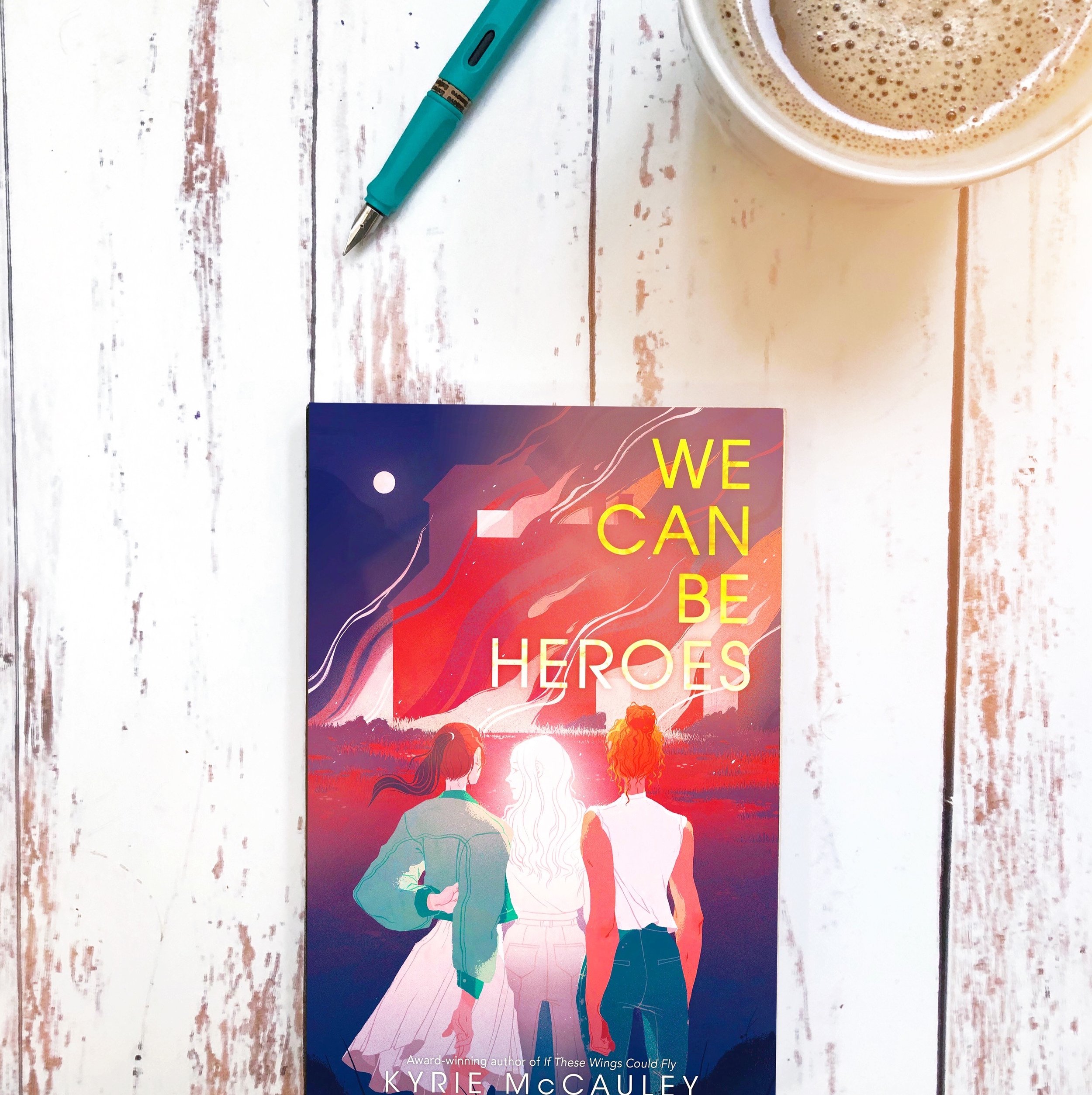

















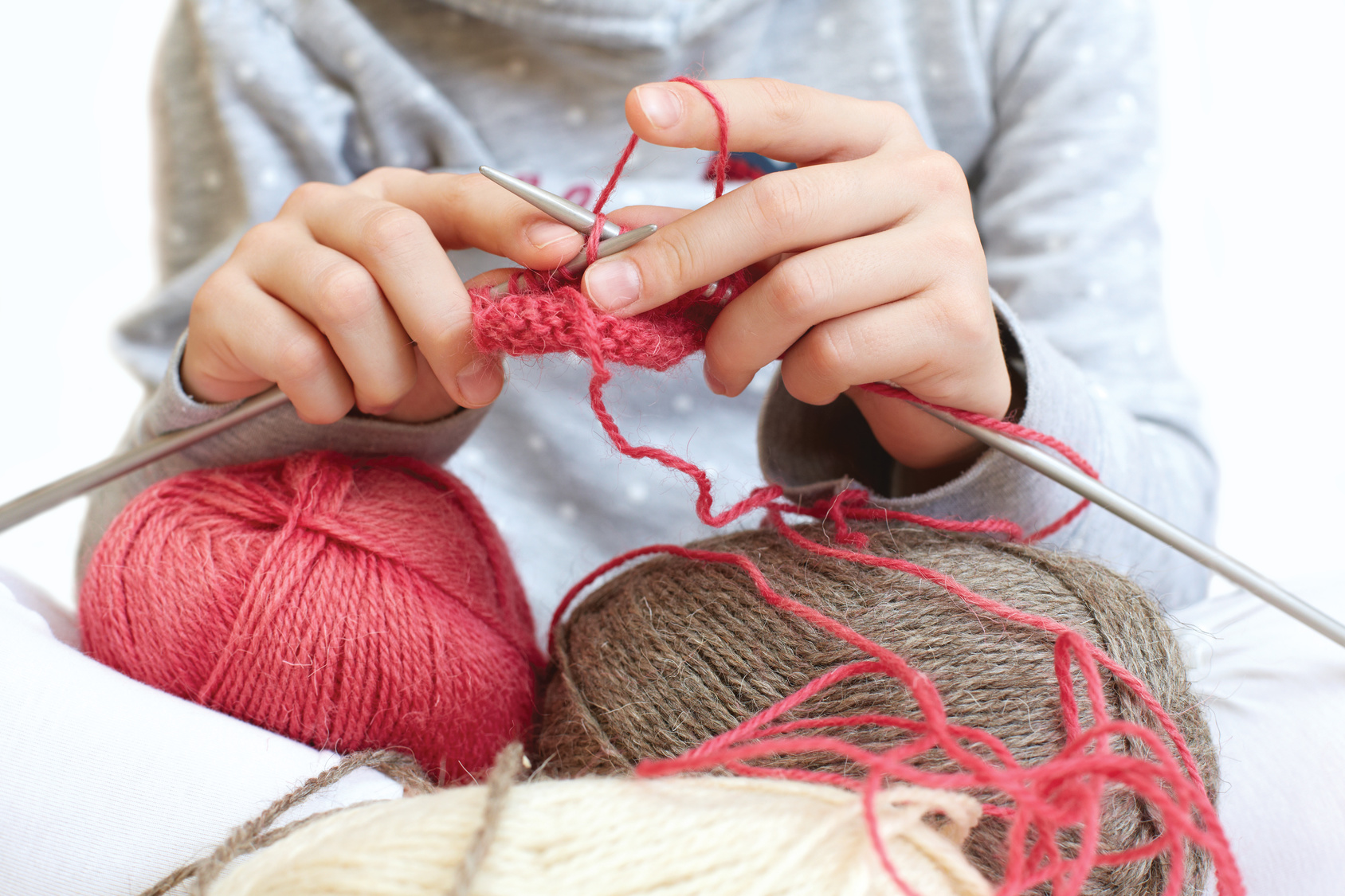

















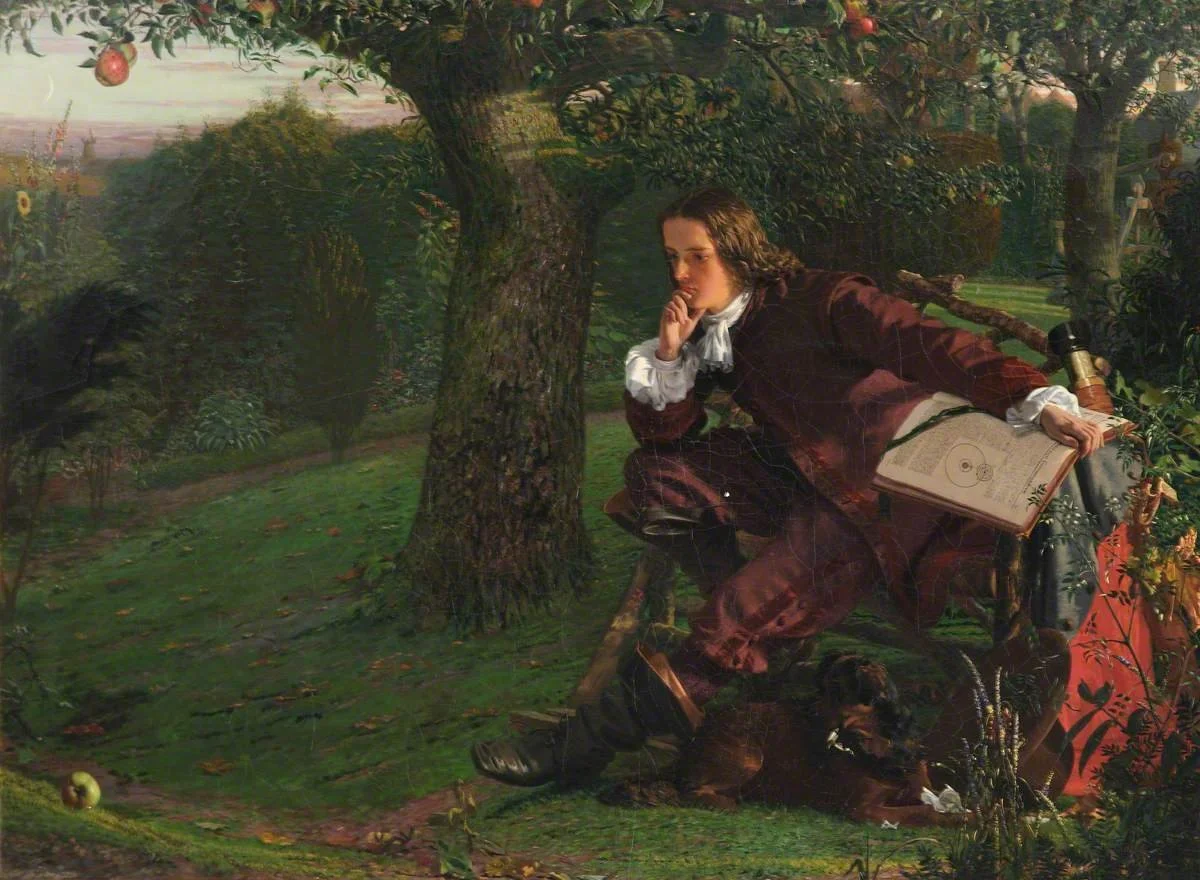













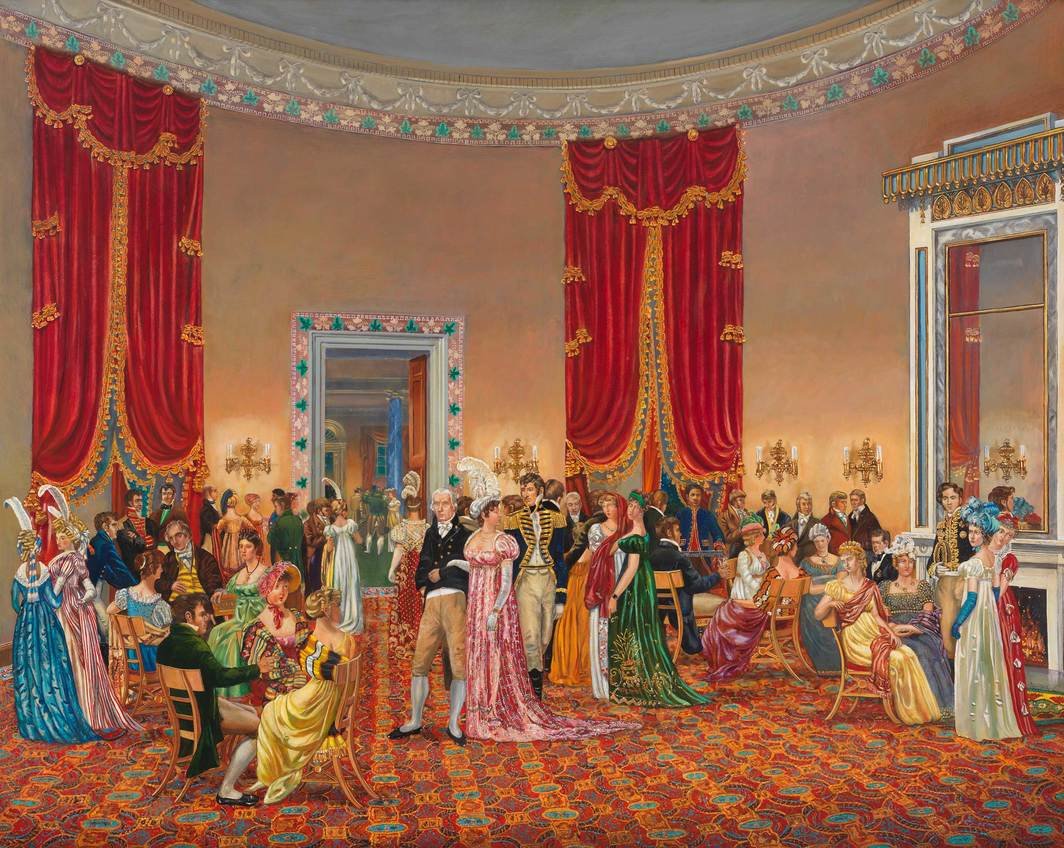



























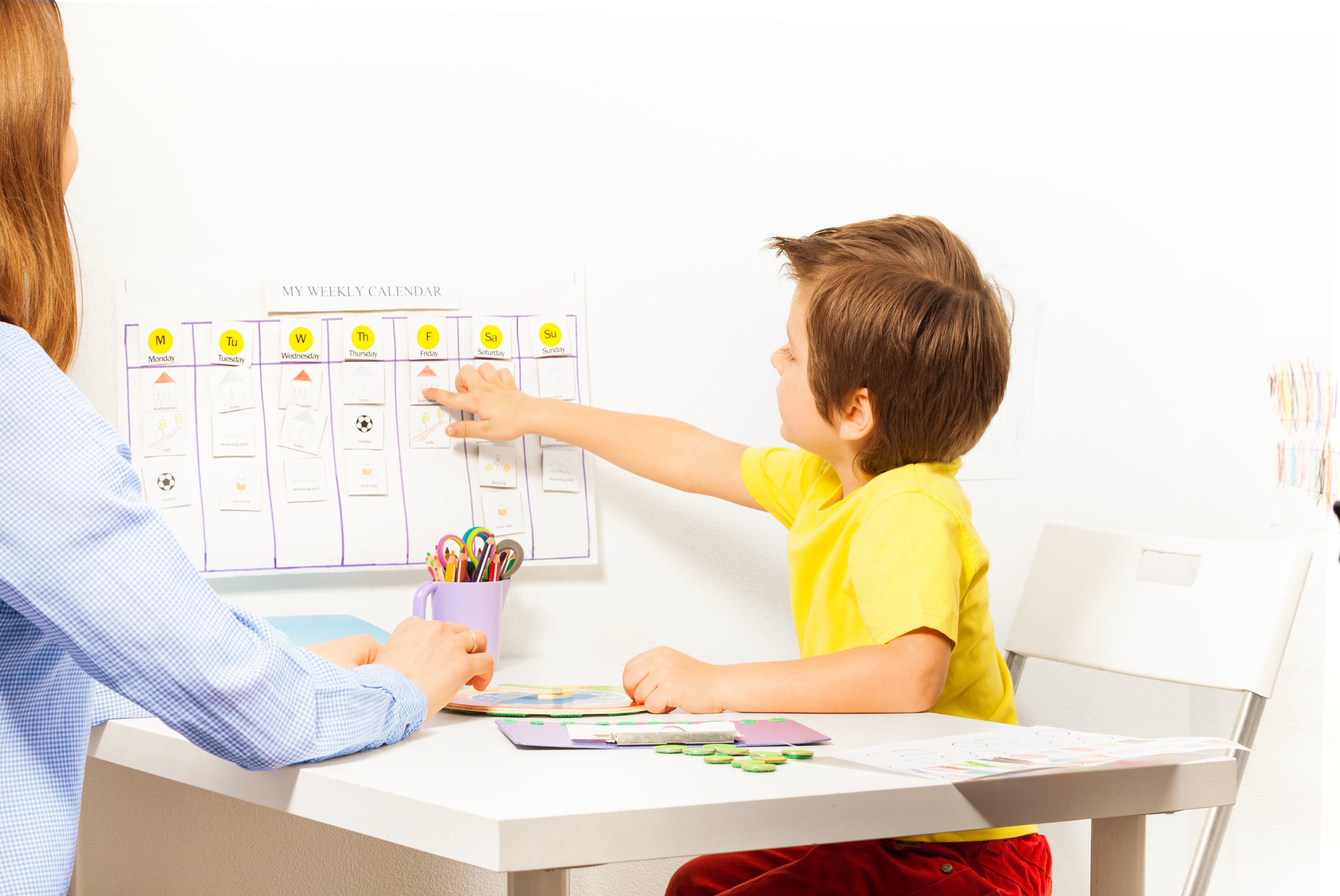

































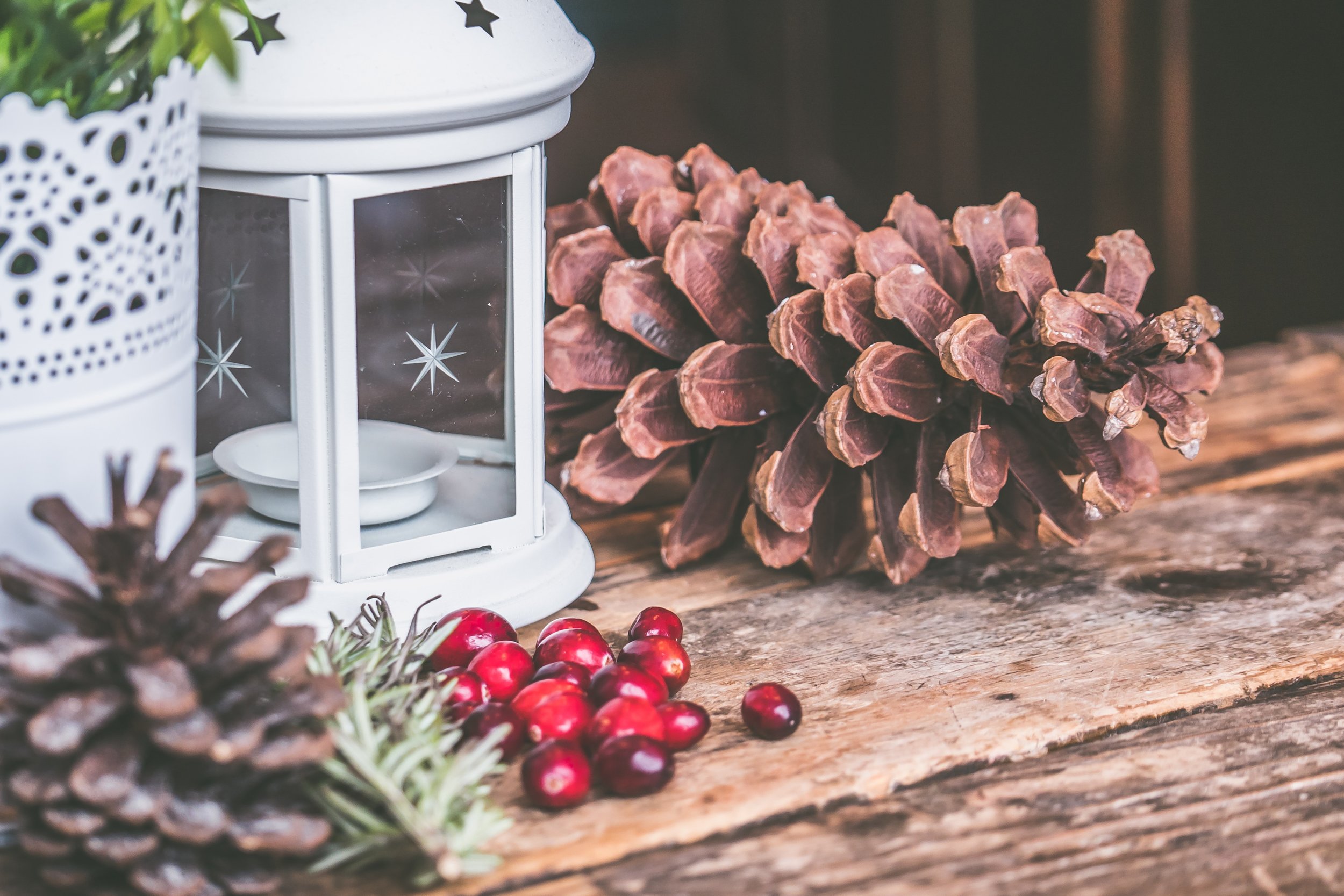























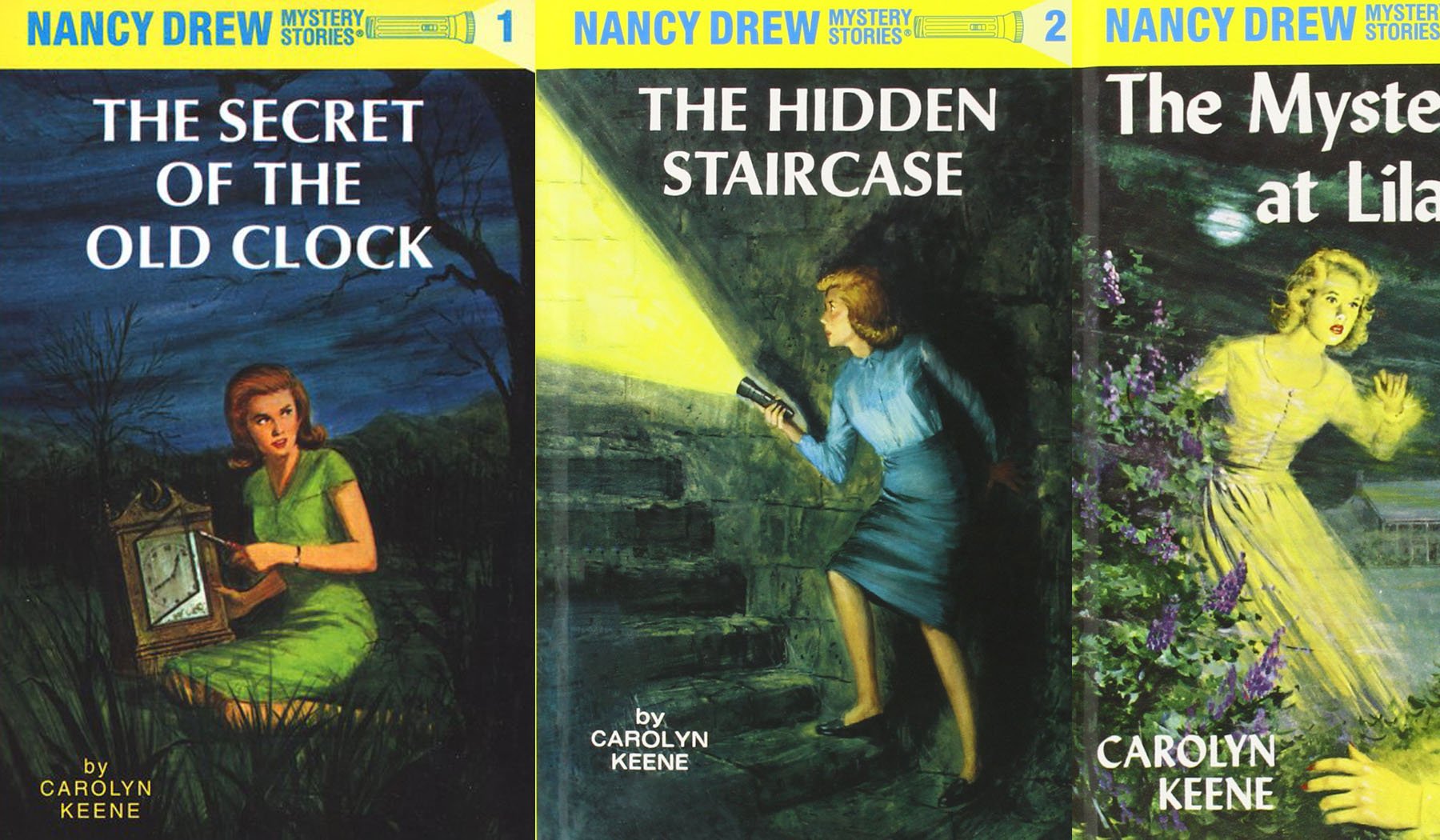





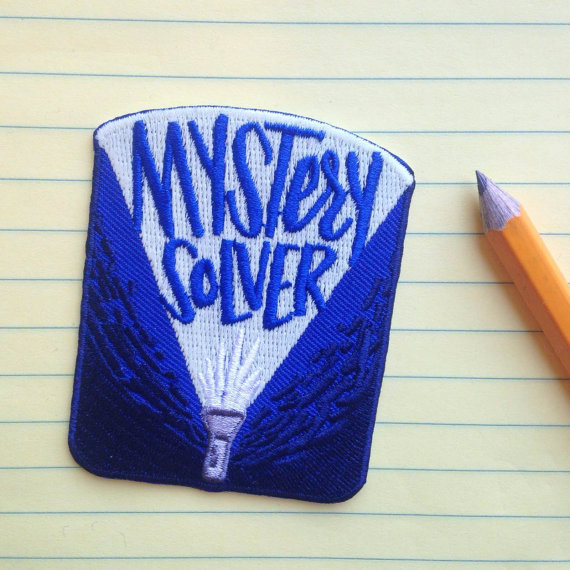















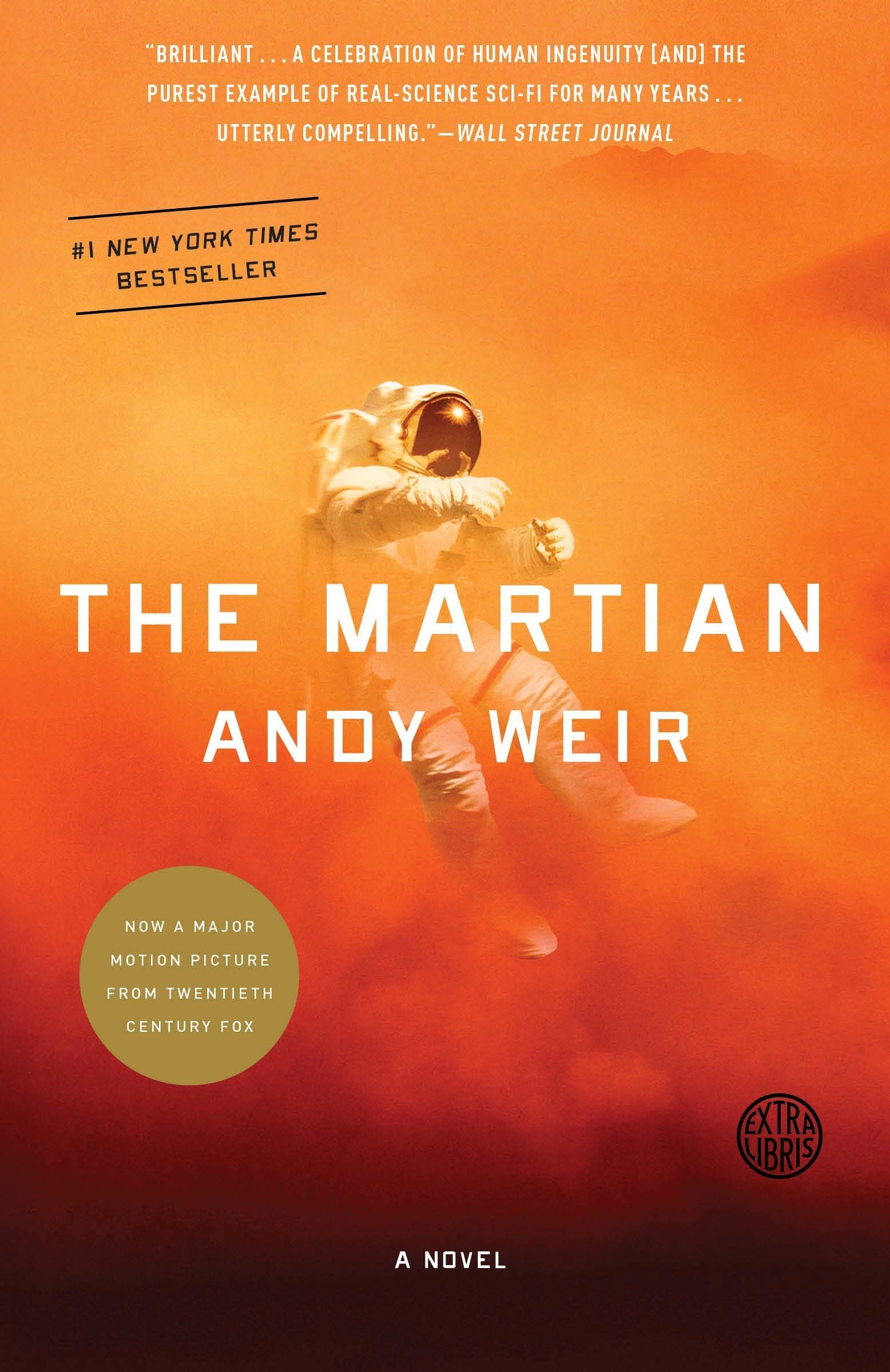










Covid cases are spiking, and lots of secular homeschool families are still navigating social activities with extra caution. Having clear policies for homeschool co-ops and get-togethers can help all the folks in your community make the best choices for their families.